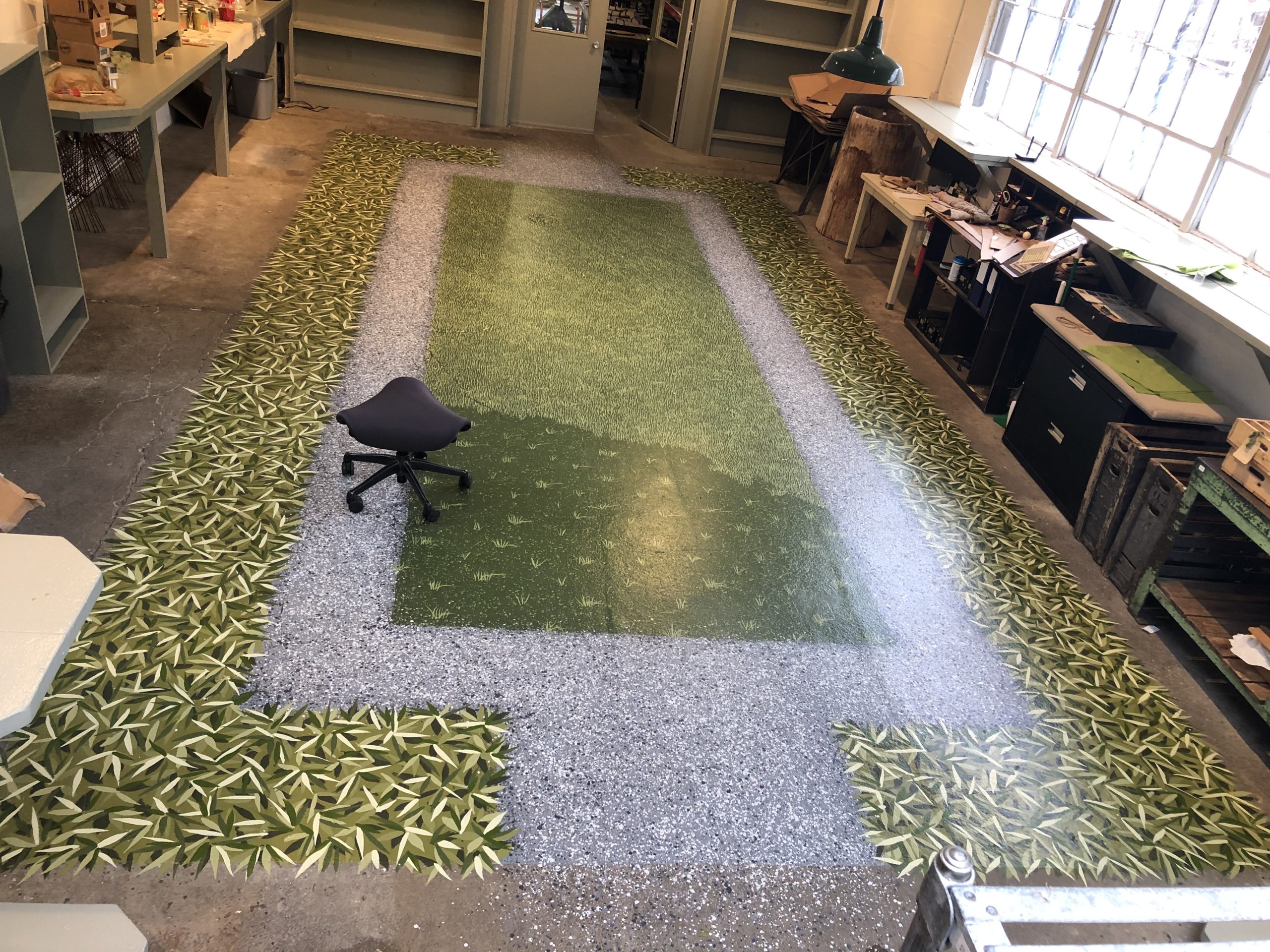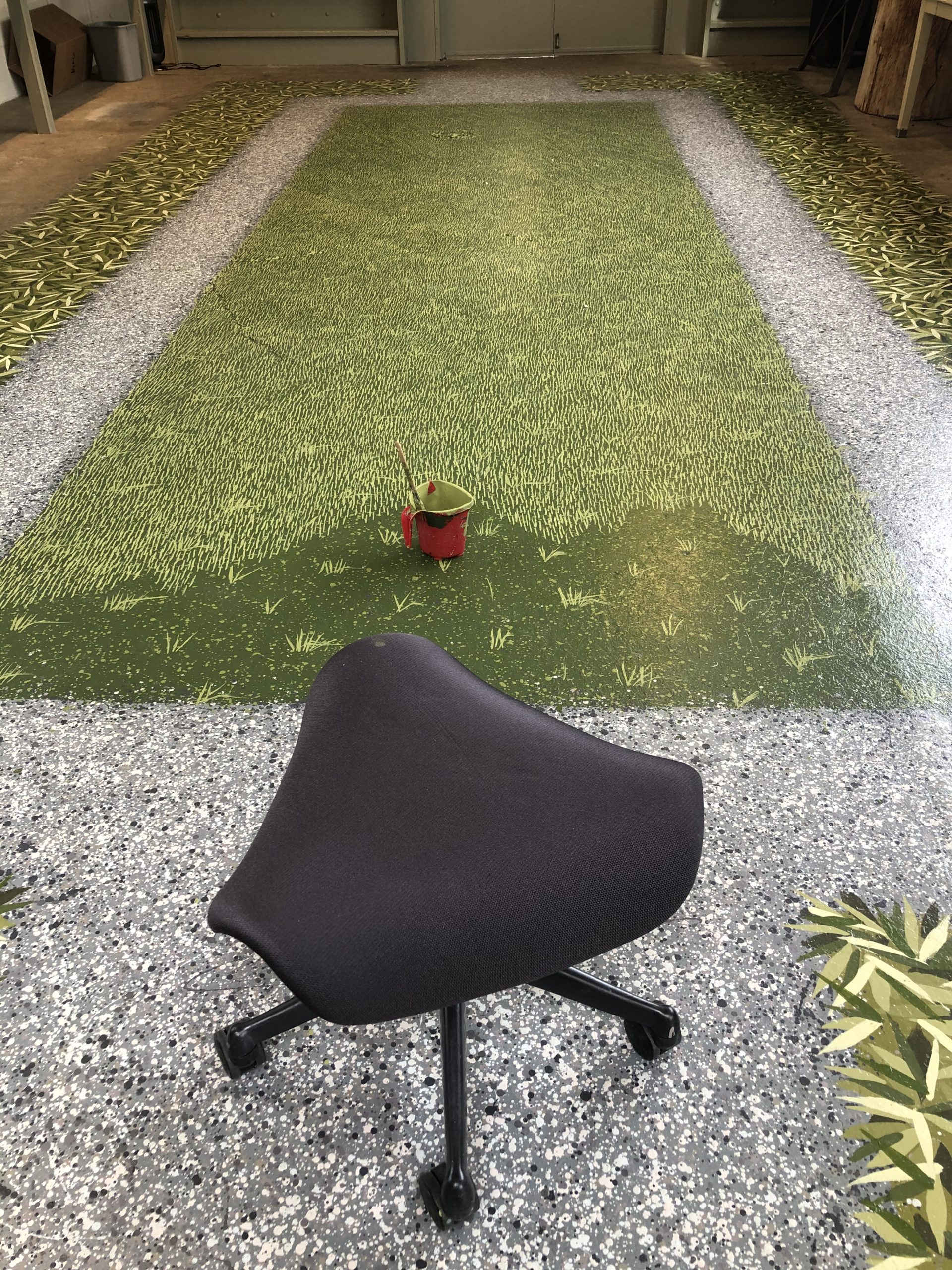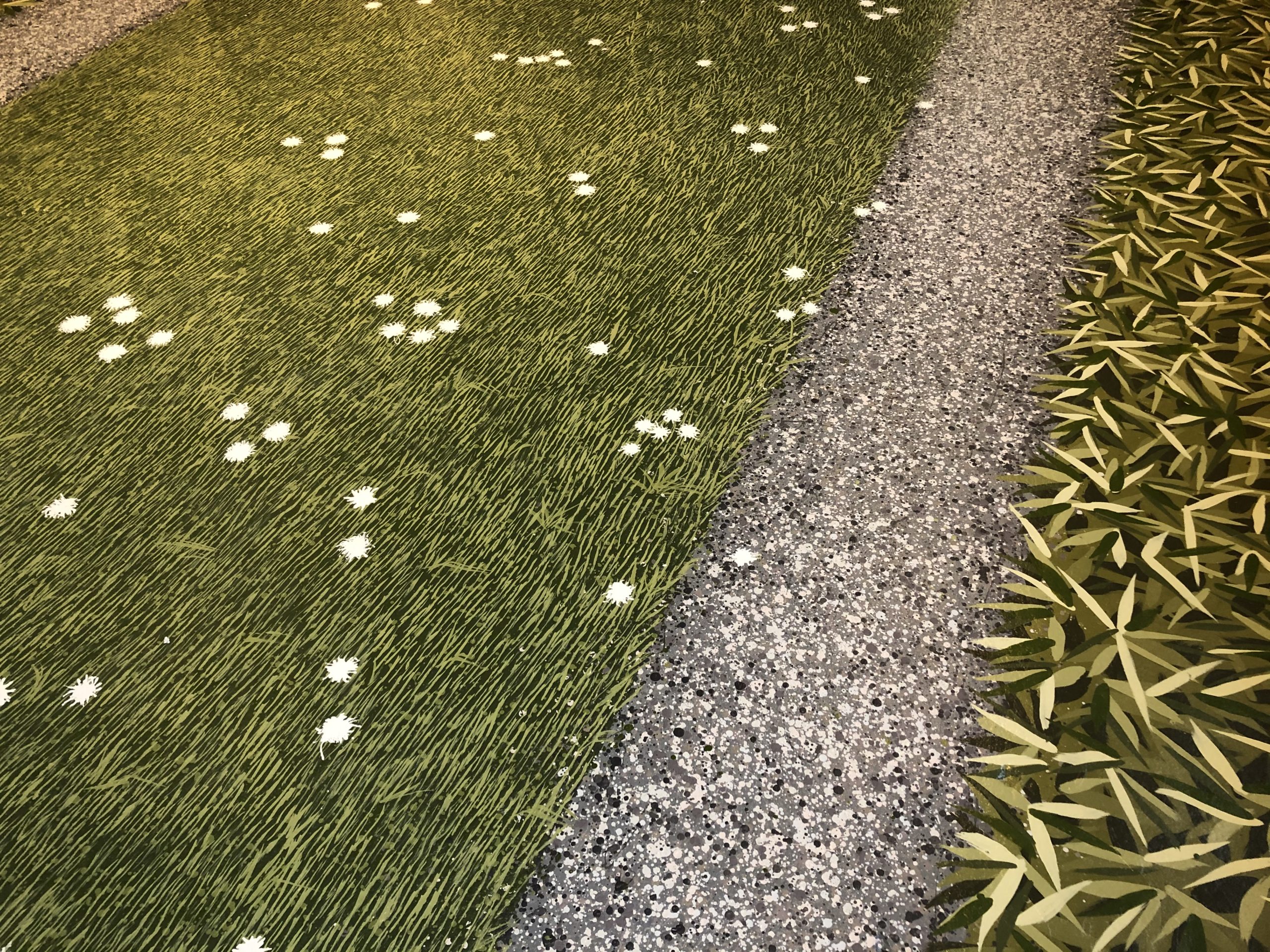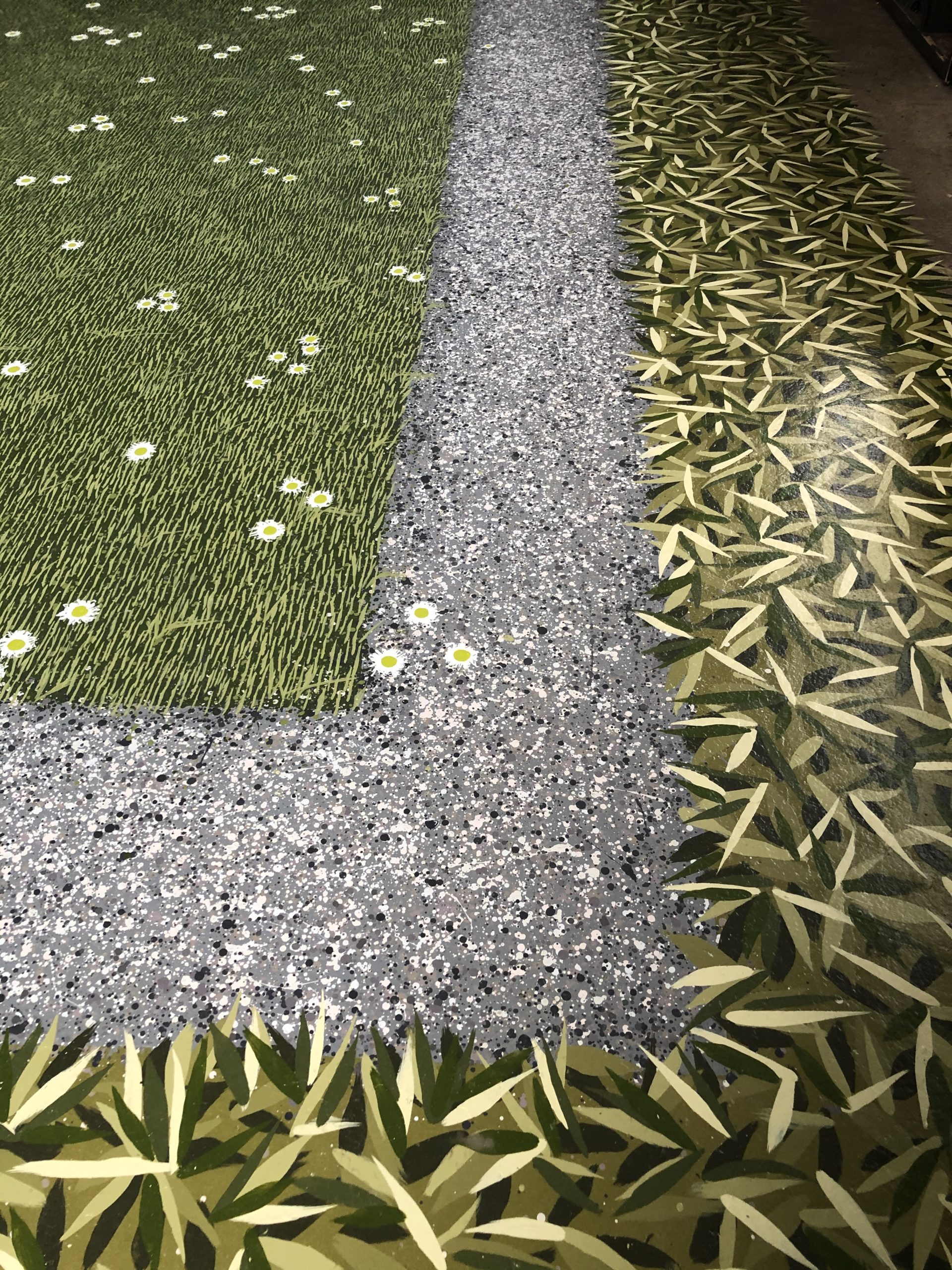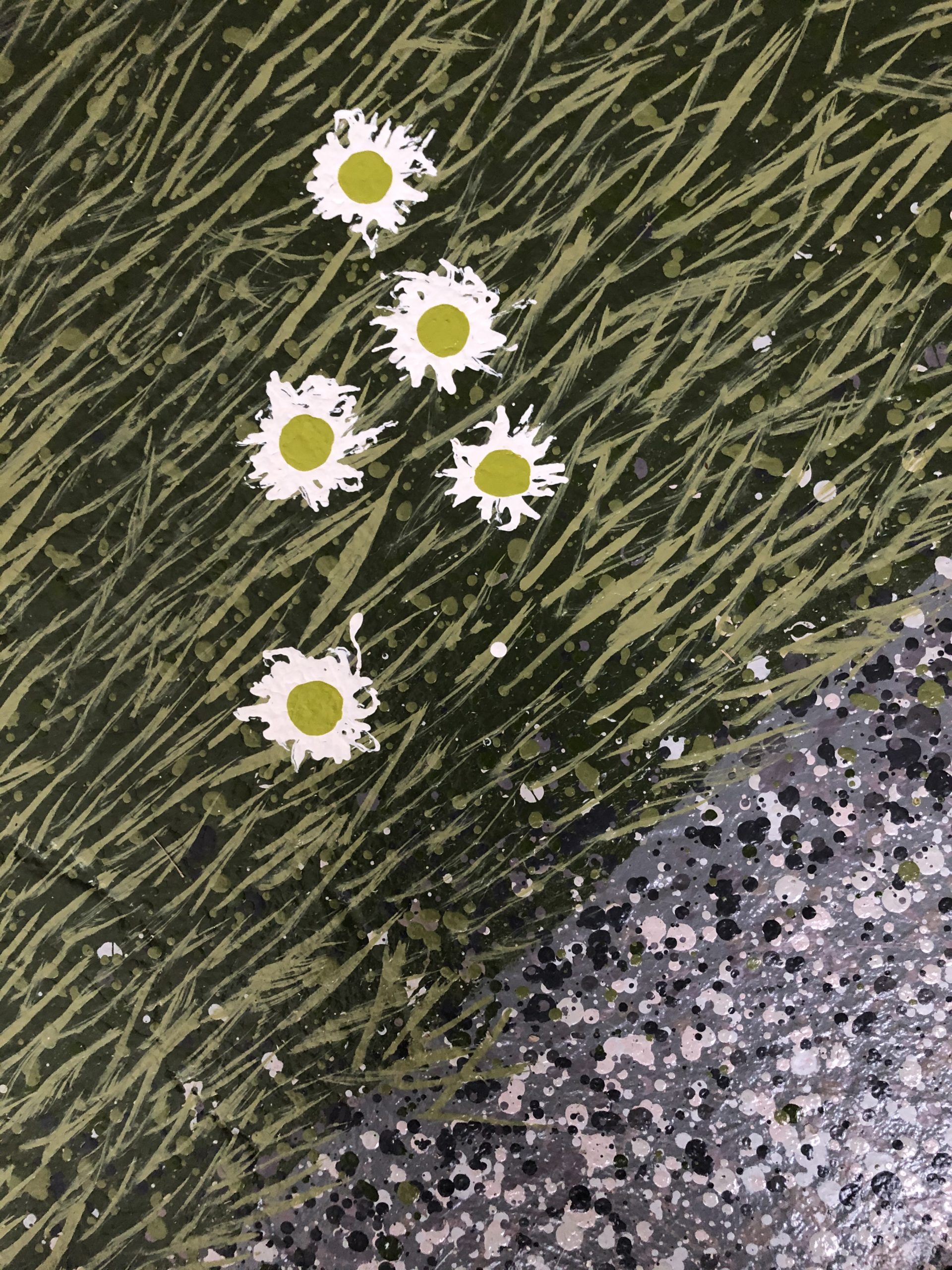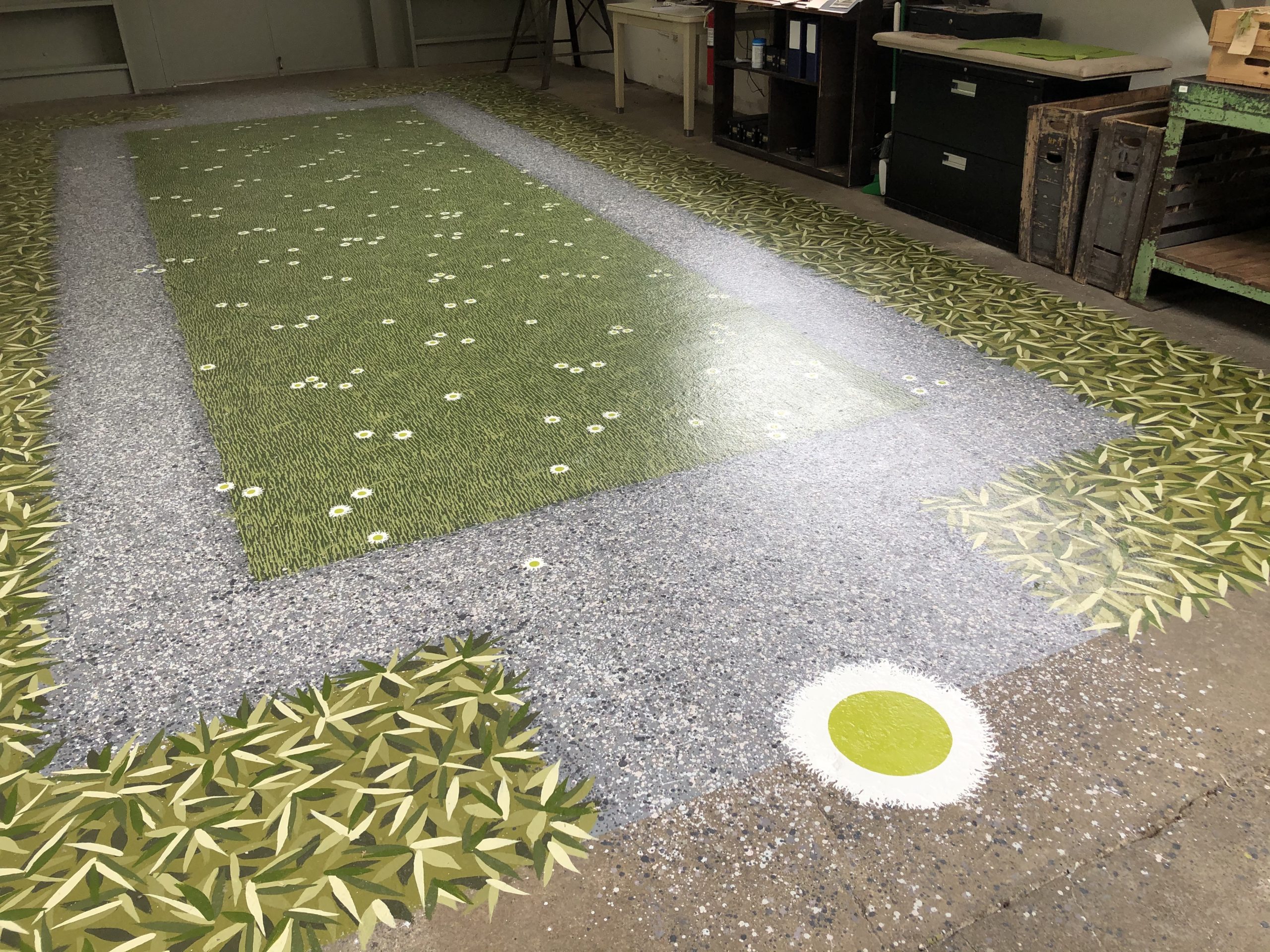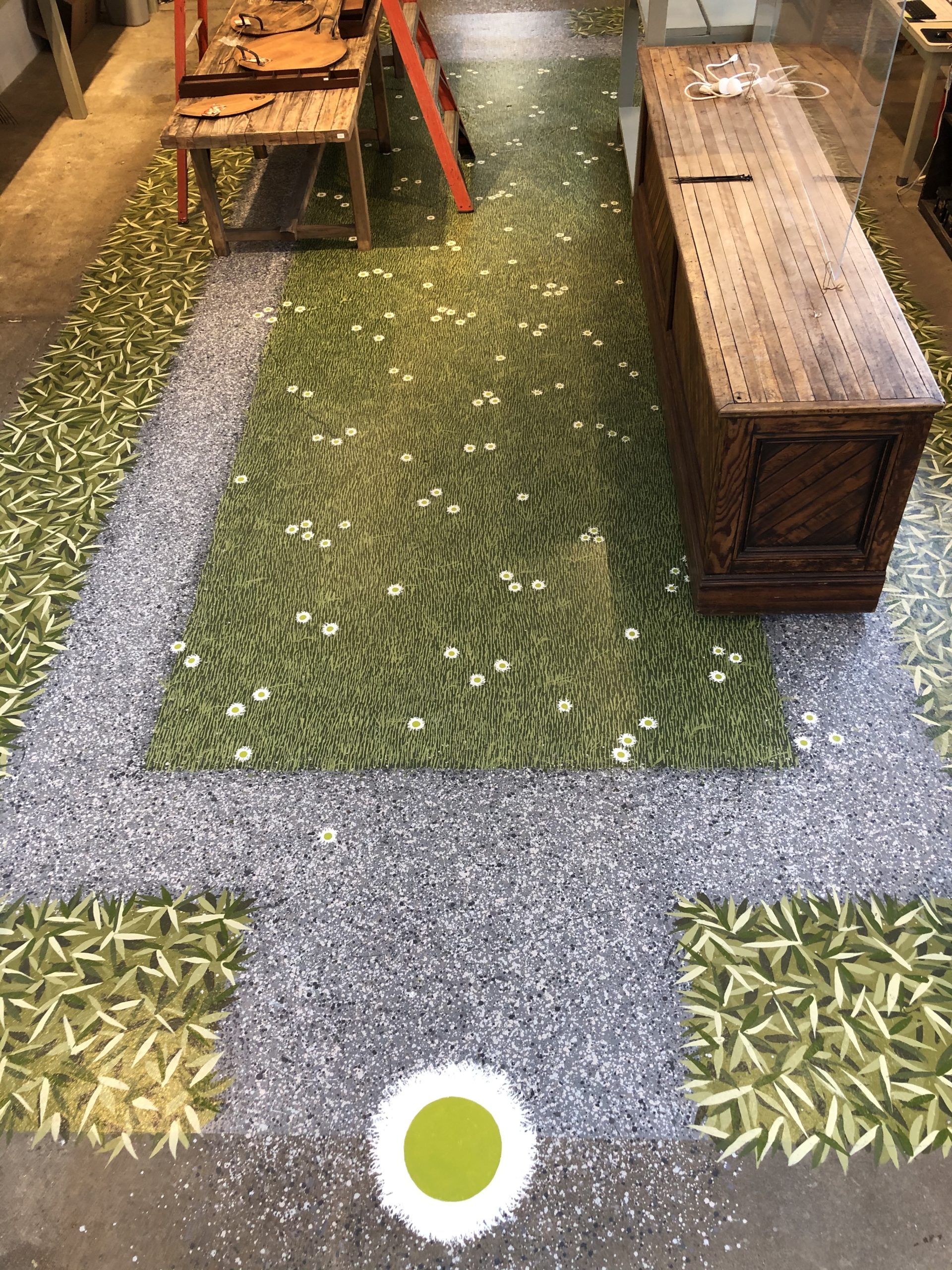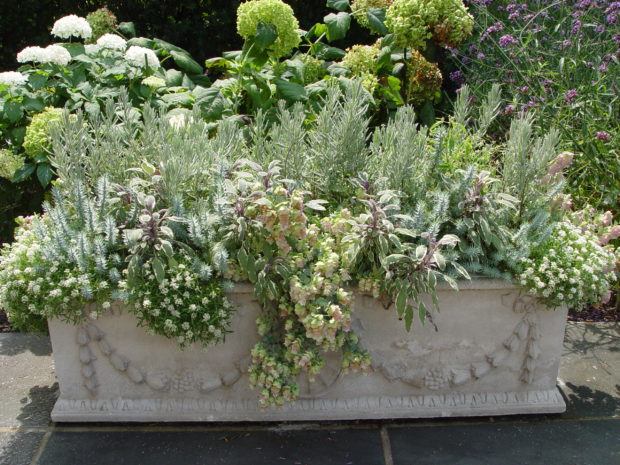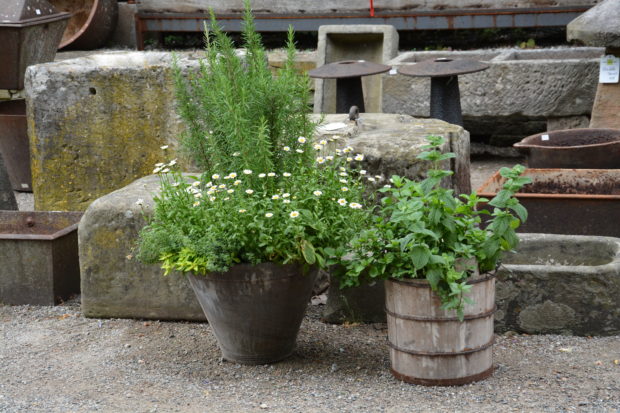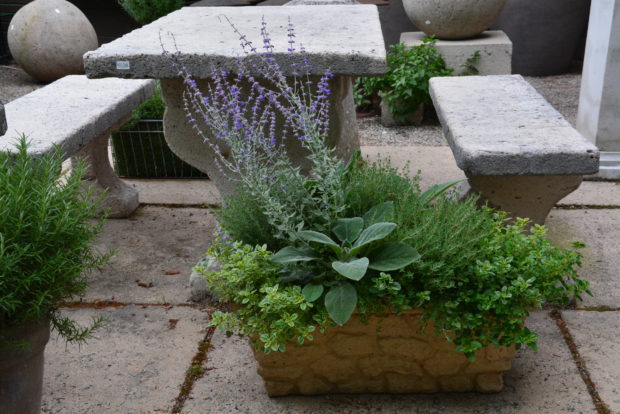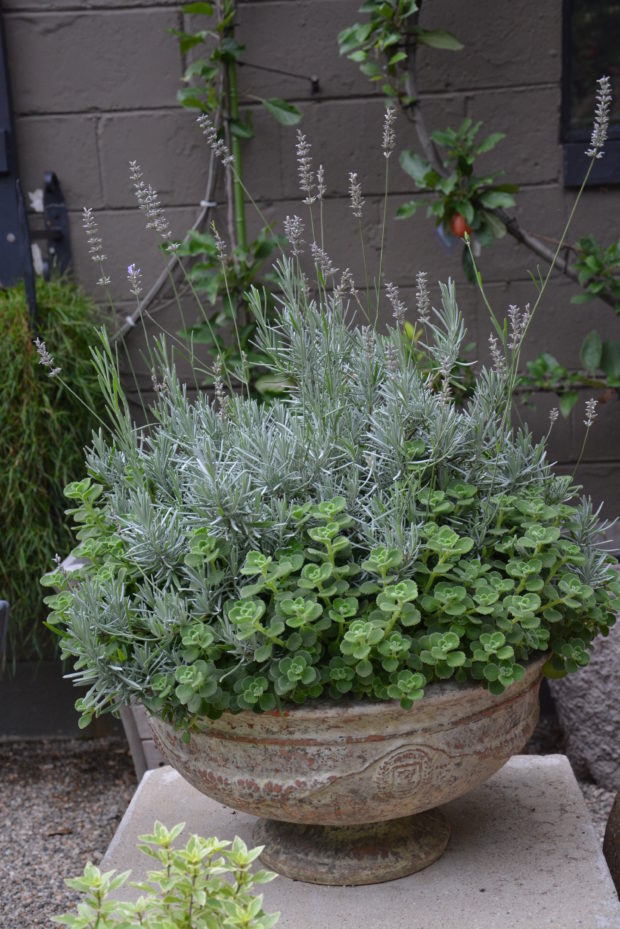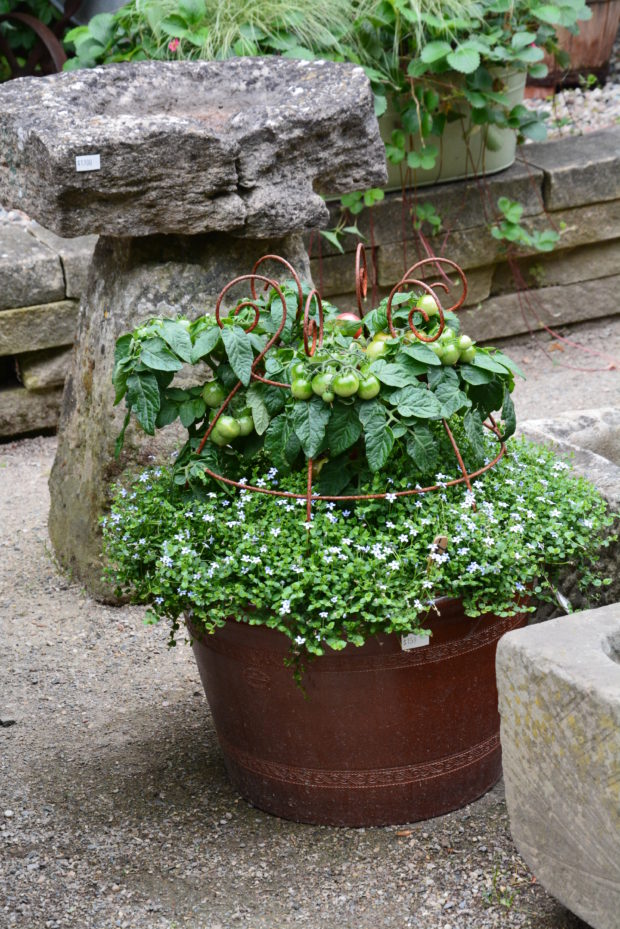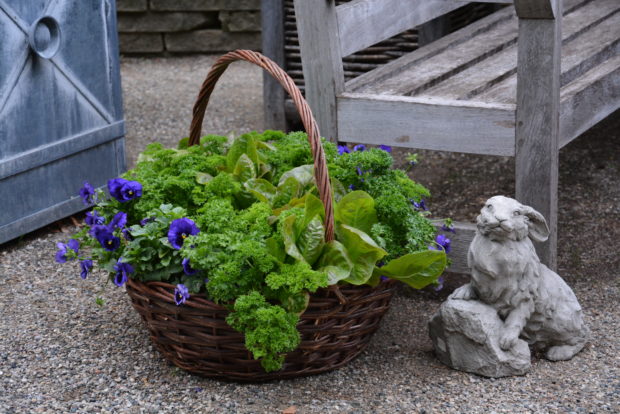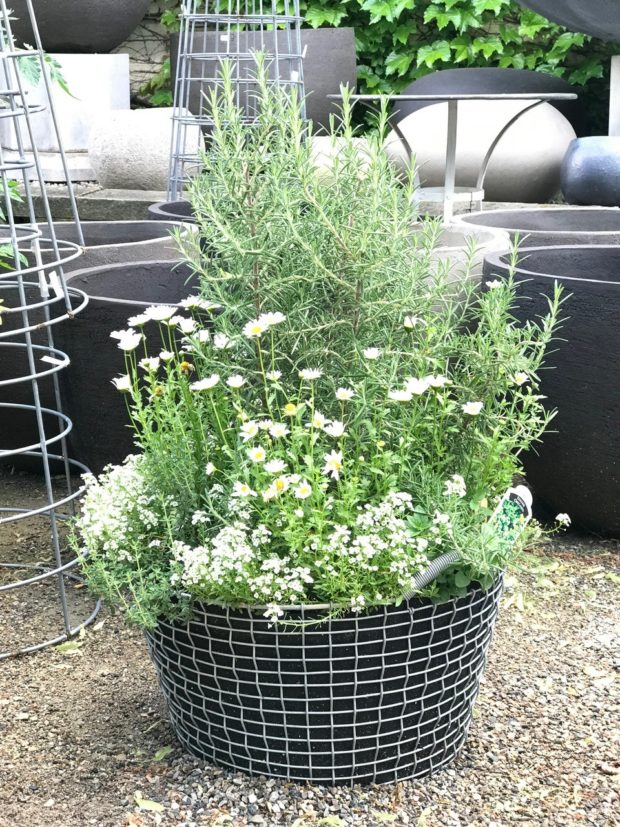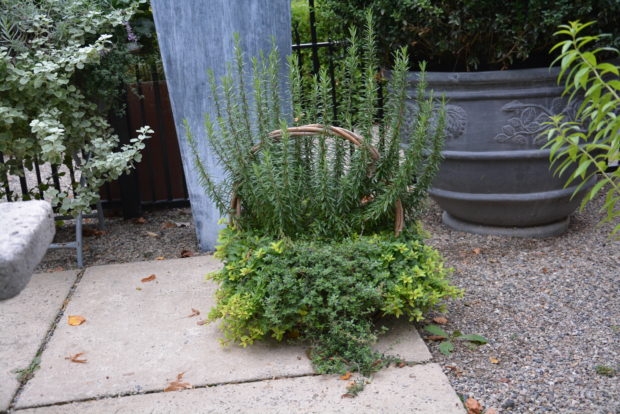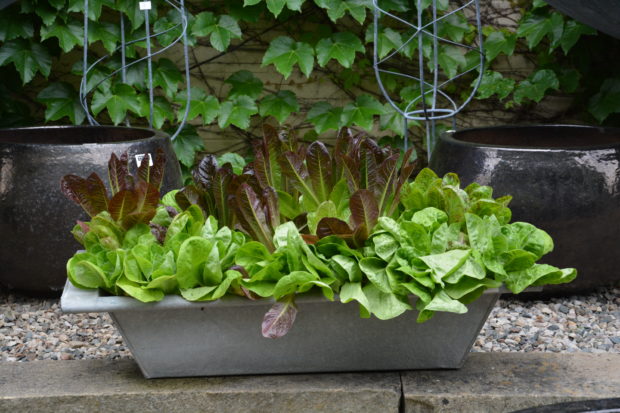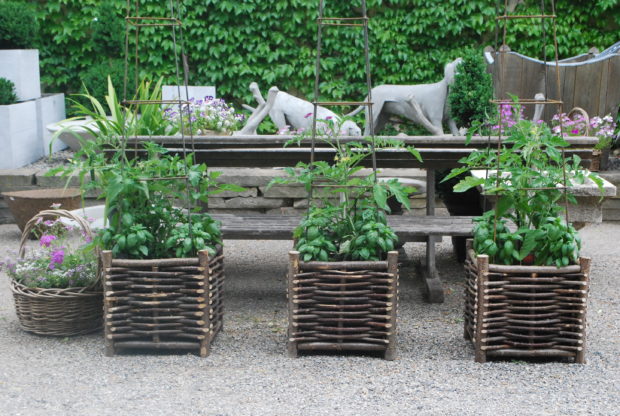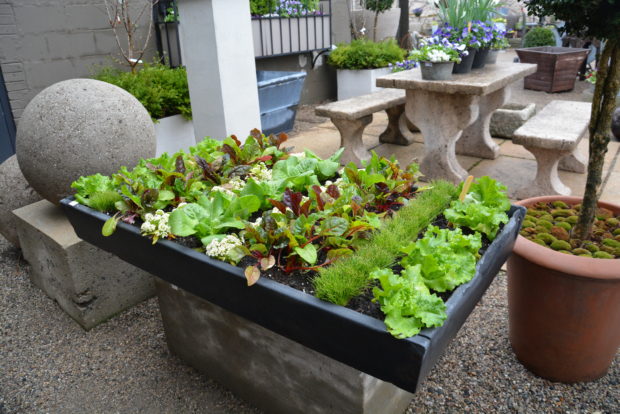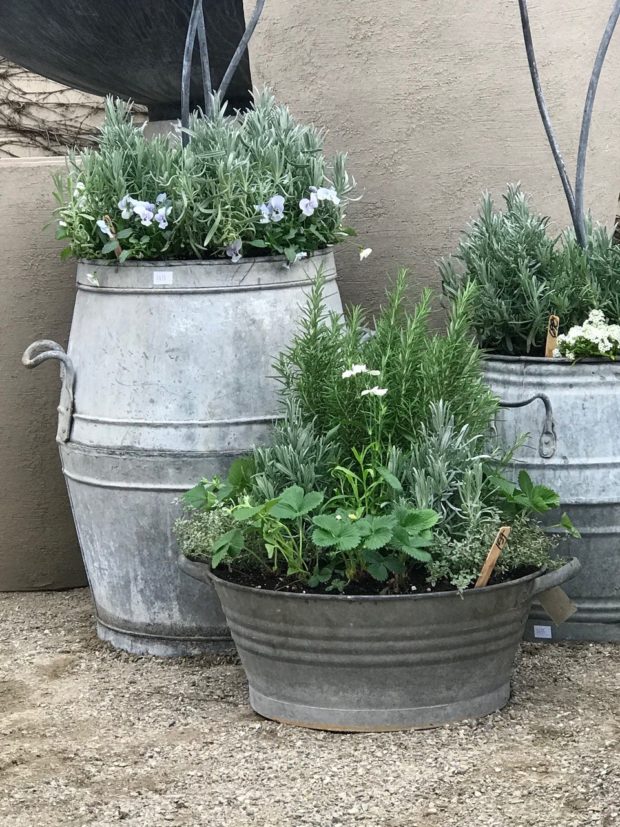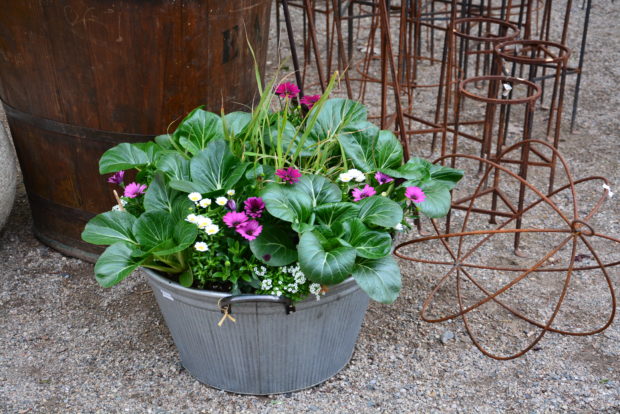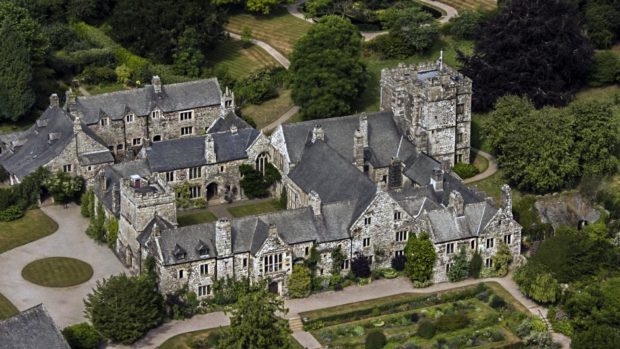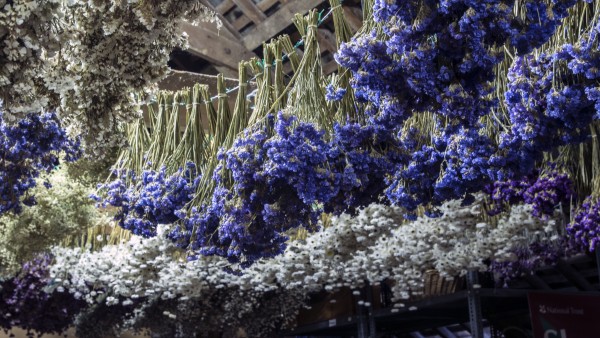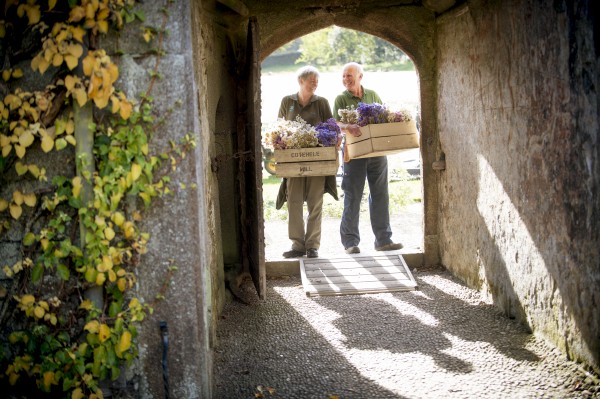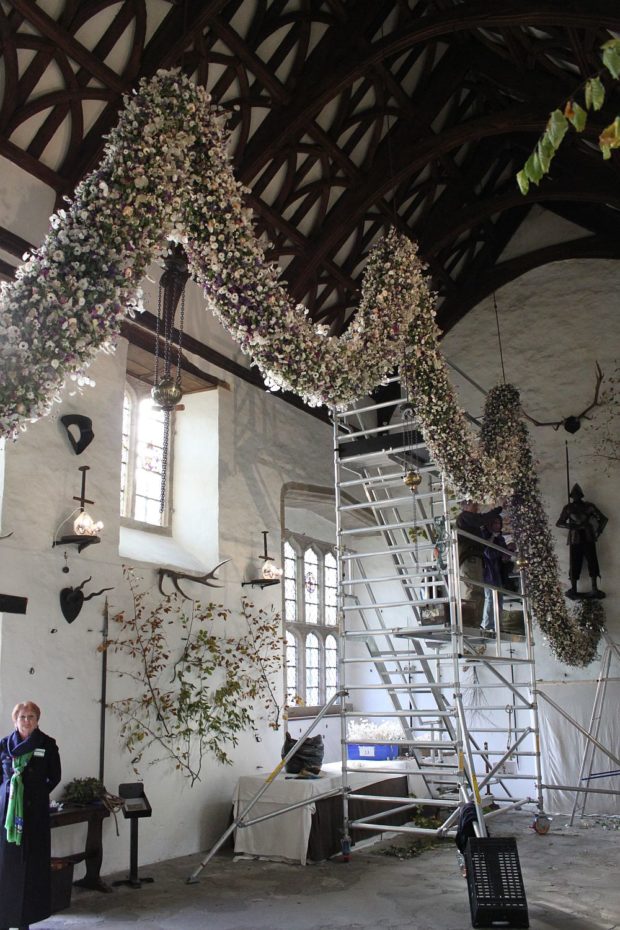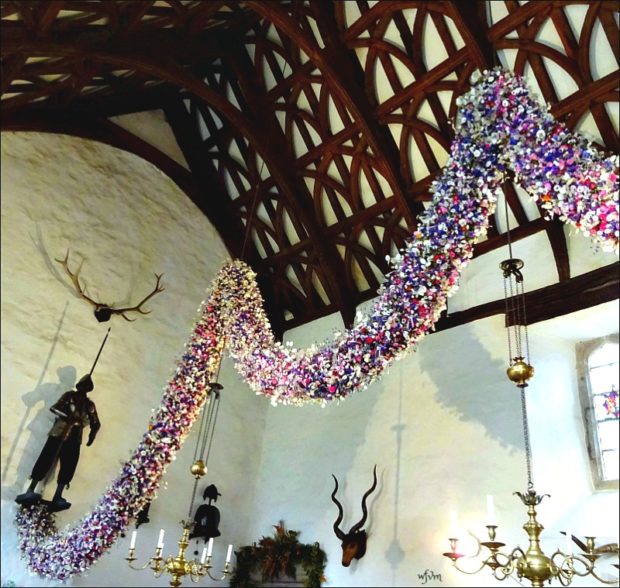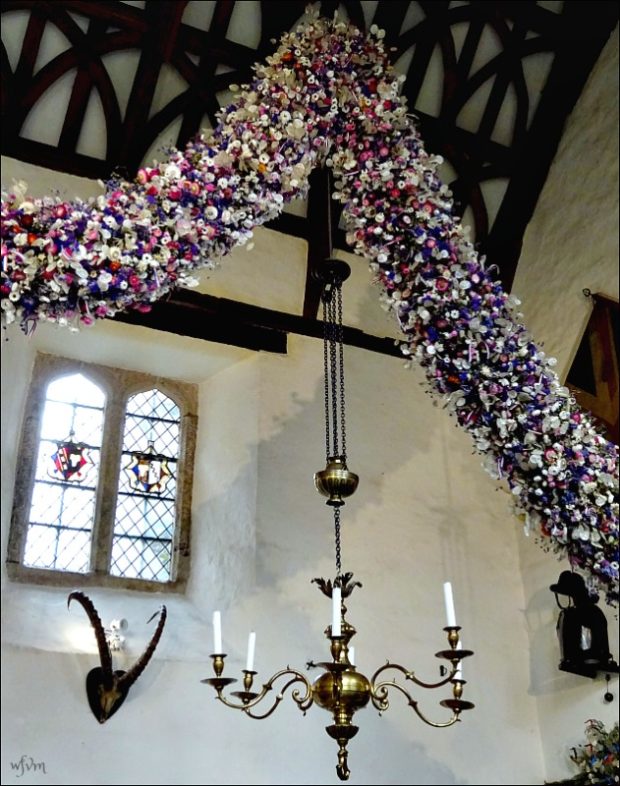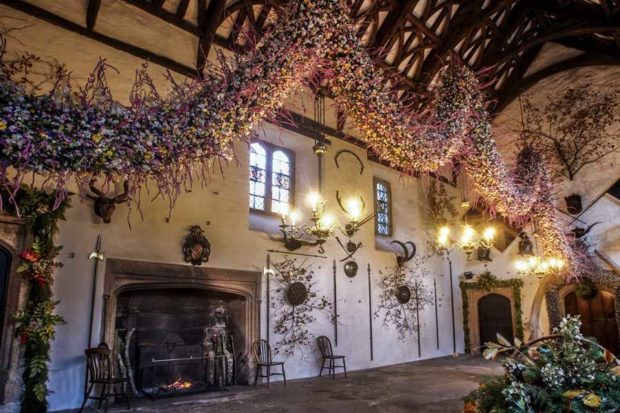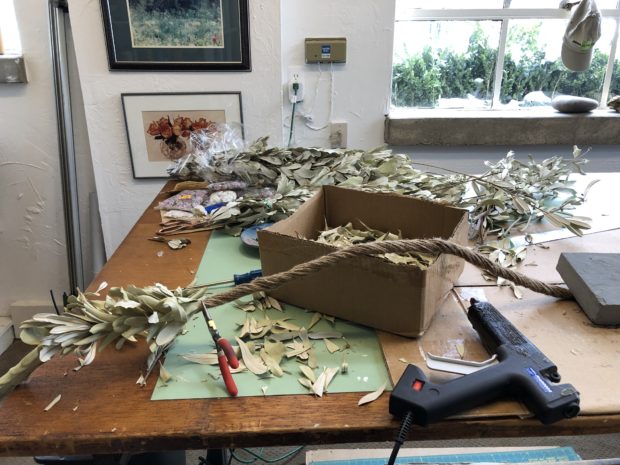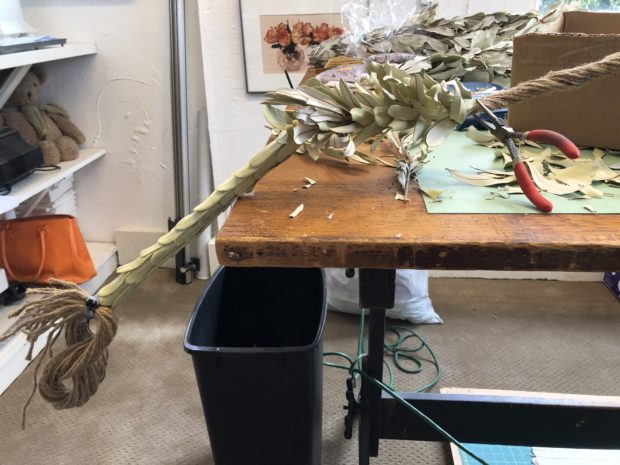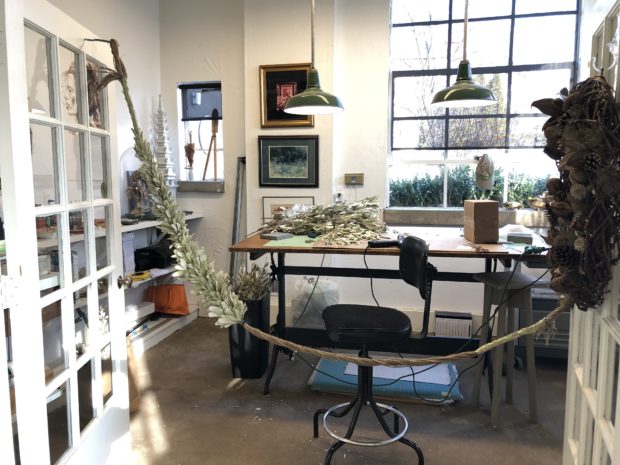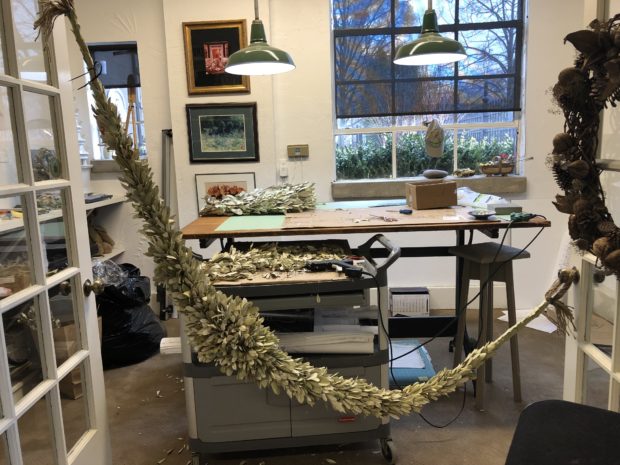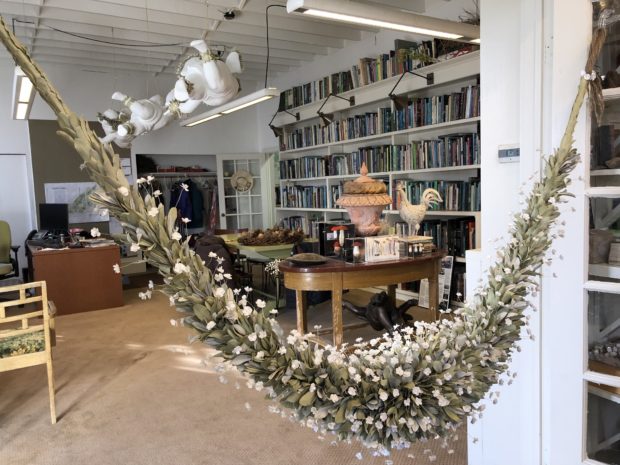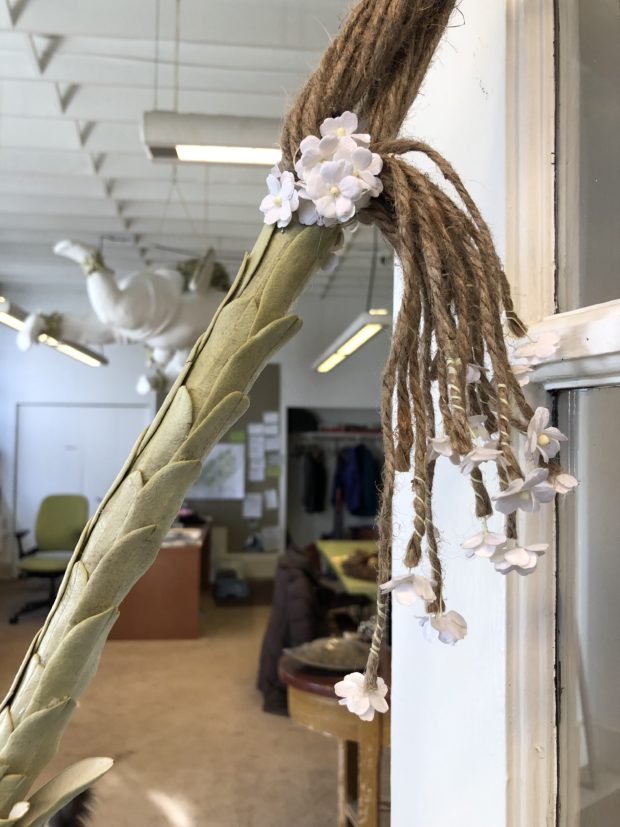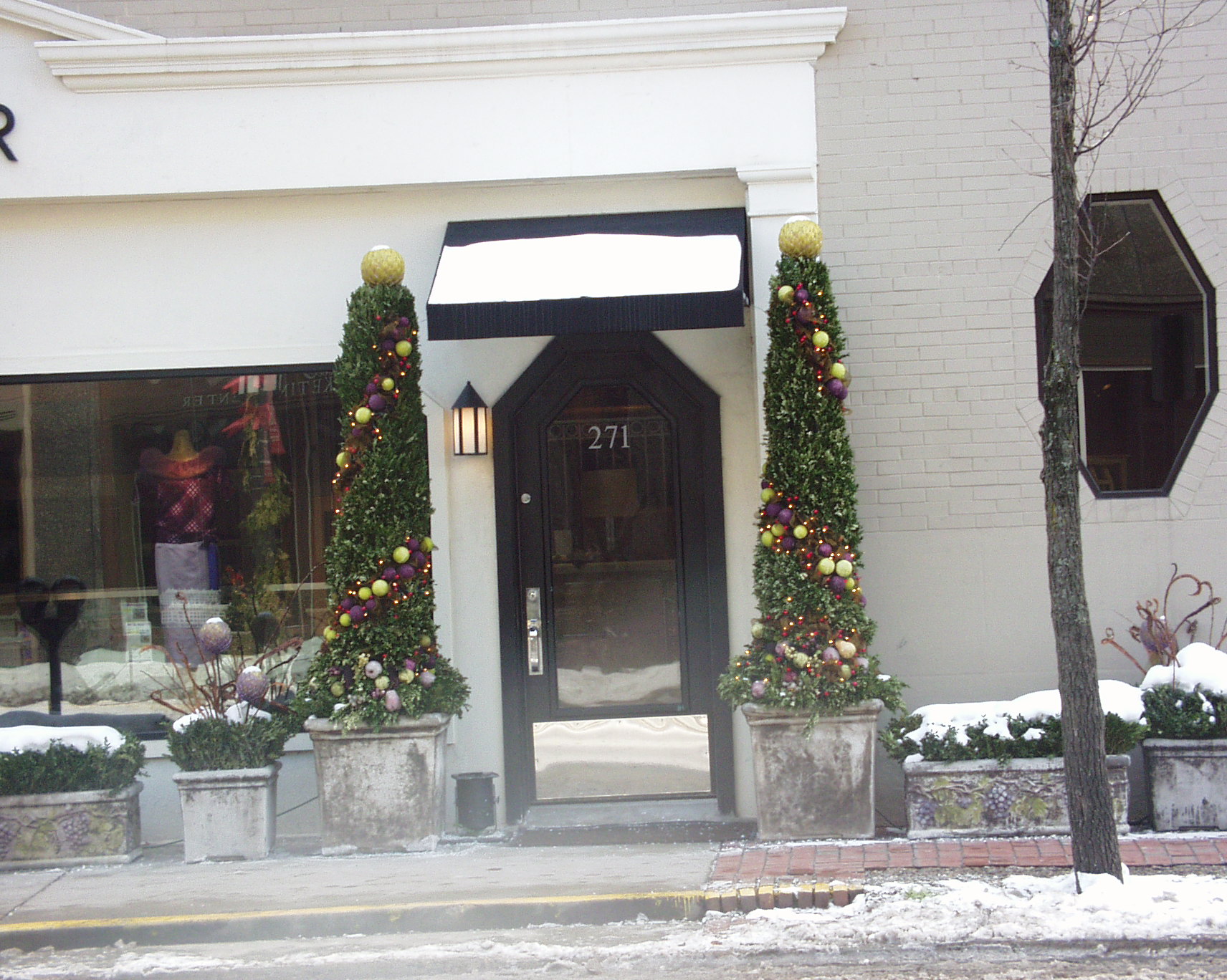
2000 To follow is a substantial run of pictures from my winter container arrangement archives-the photo collection and work dates back 21 years. I am as surprised to see this as you are. I did not think there were this many years and that much history-but here it is. I did not compare every picture from a given year, and choose what I thought was the best. Whatever seemed to speak to this moment was included. Some arrangements look in keeping with the year they were made. Some look ahead of their time. Some look great and others are so regrettably so so. Ha. You decide what you think. I have my memories.
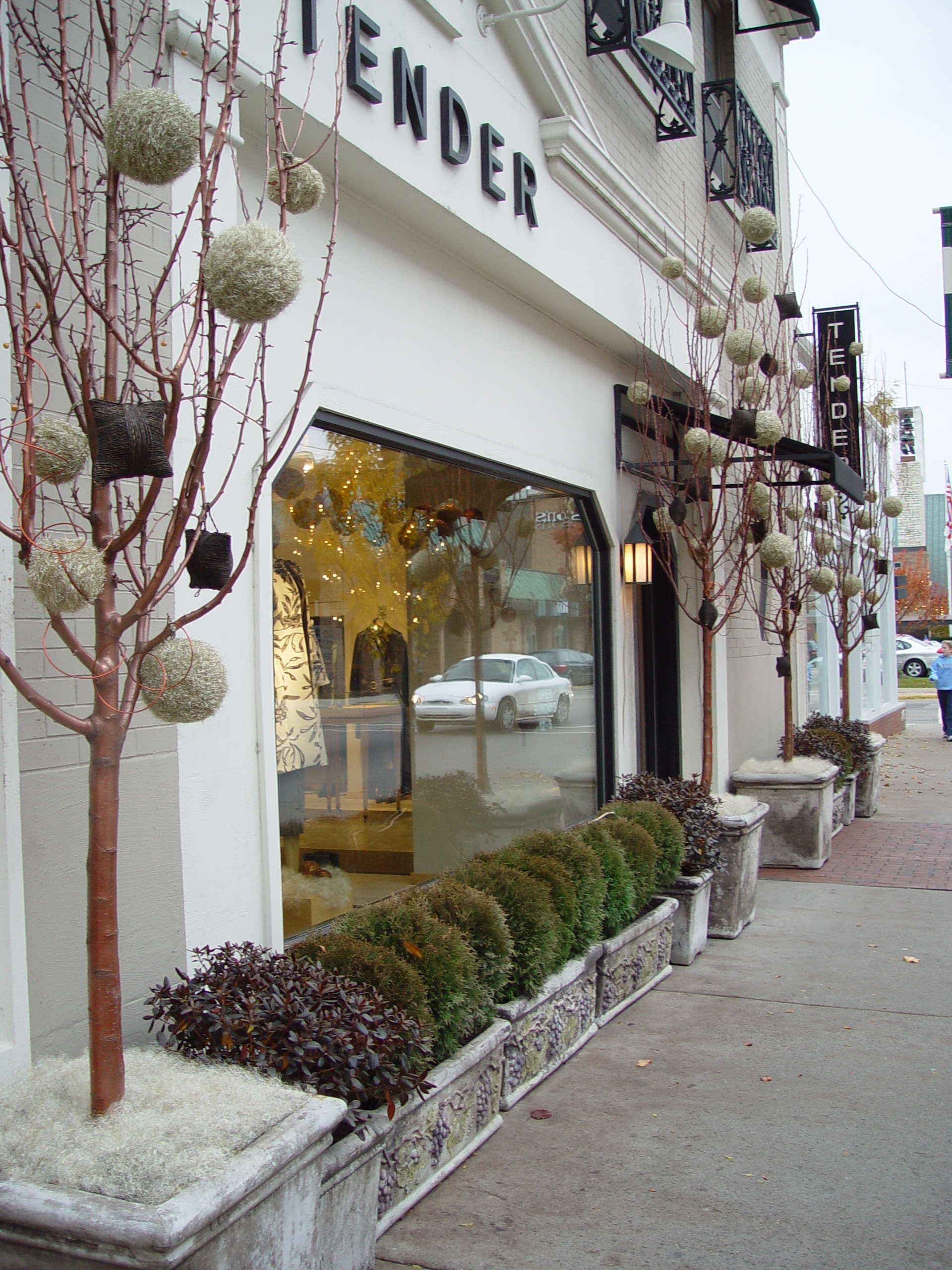
2001 Tender We recycled dead Bradford pears from our nursery supplier, and rubbed them down with a copper colored wax. The trees were ornamented with twine pillows and platinum fluff balls.
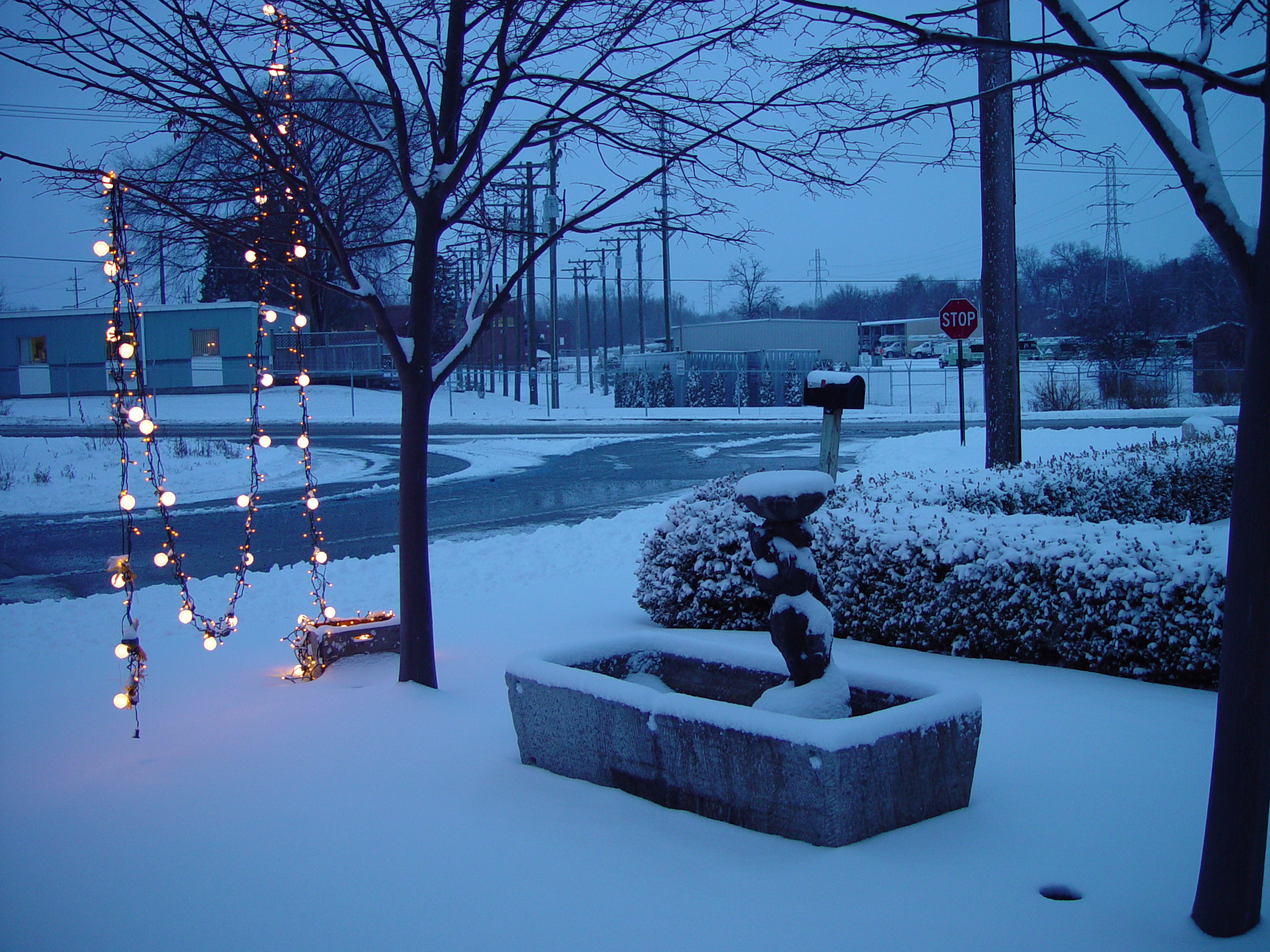
2002 This light garland was the first of many that Rob would make over the past 20 years. I am sure there are more to come.

2002, part 2 Galvanized pipe wound round with lights, curly copper willow, and greens augmented with light strands and lighted ornaments

2003 Dried and dyed mood moss fitted and glued over urethane topiary forms

2004 Prelit glitter and berry branches hover over fresh cut greens and lighted ball ornaments.
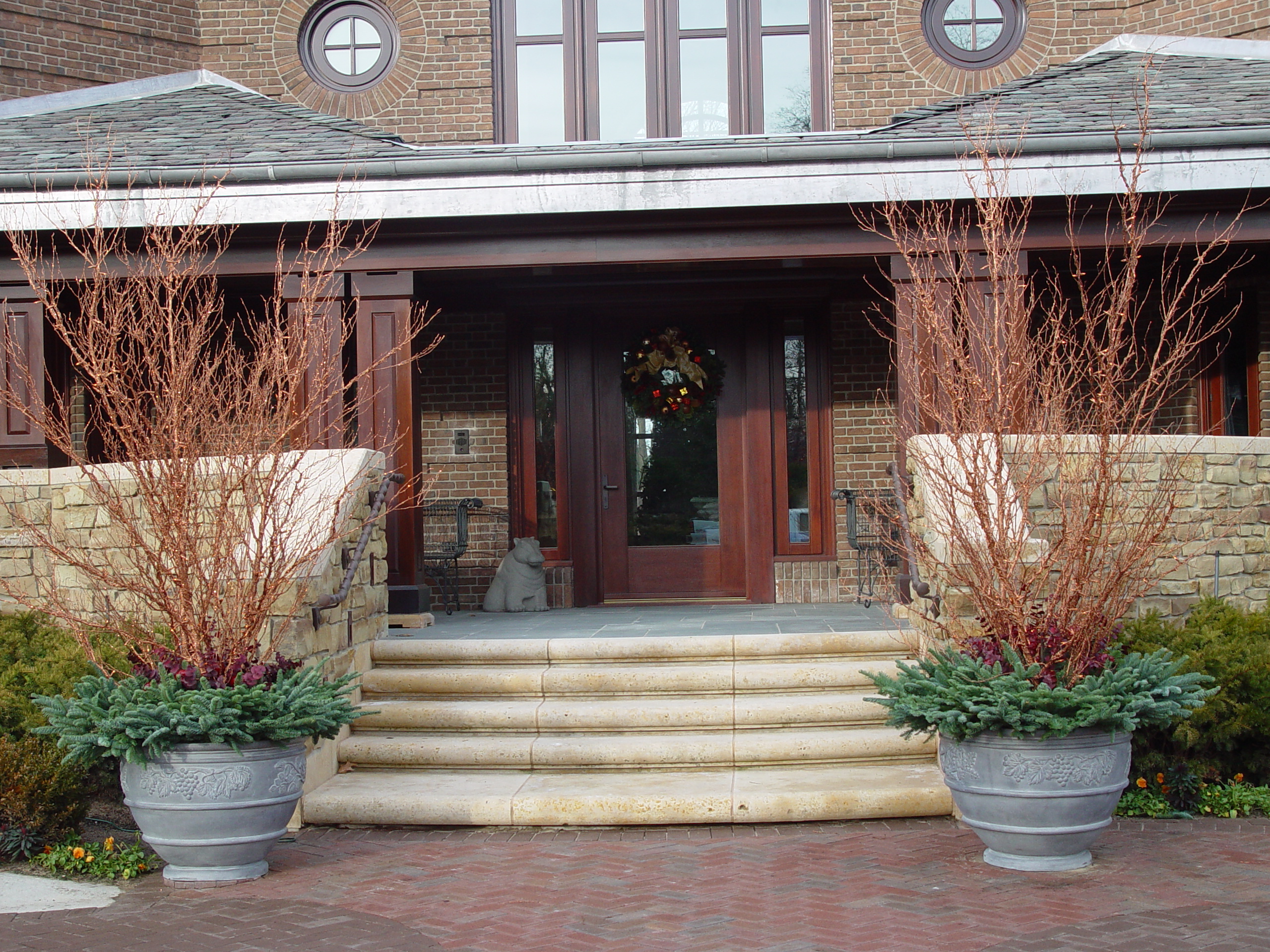
2004 More of those prelit metallic copper glitter branches.

2005 round wood poles, grapevine spheres and lengths of thin wood lath
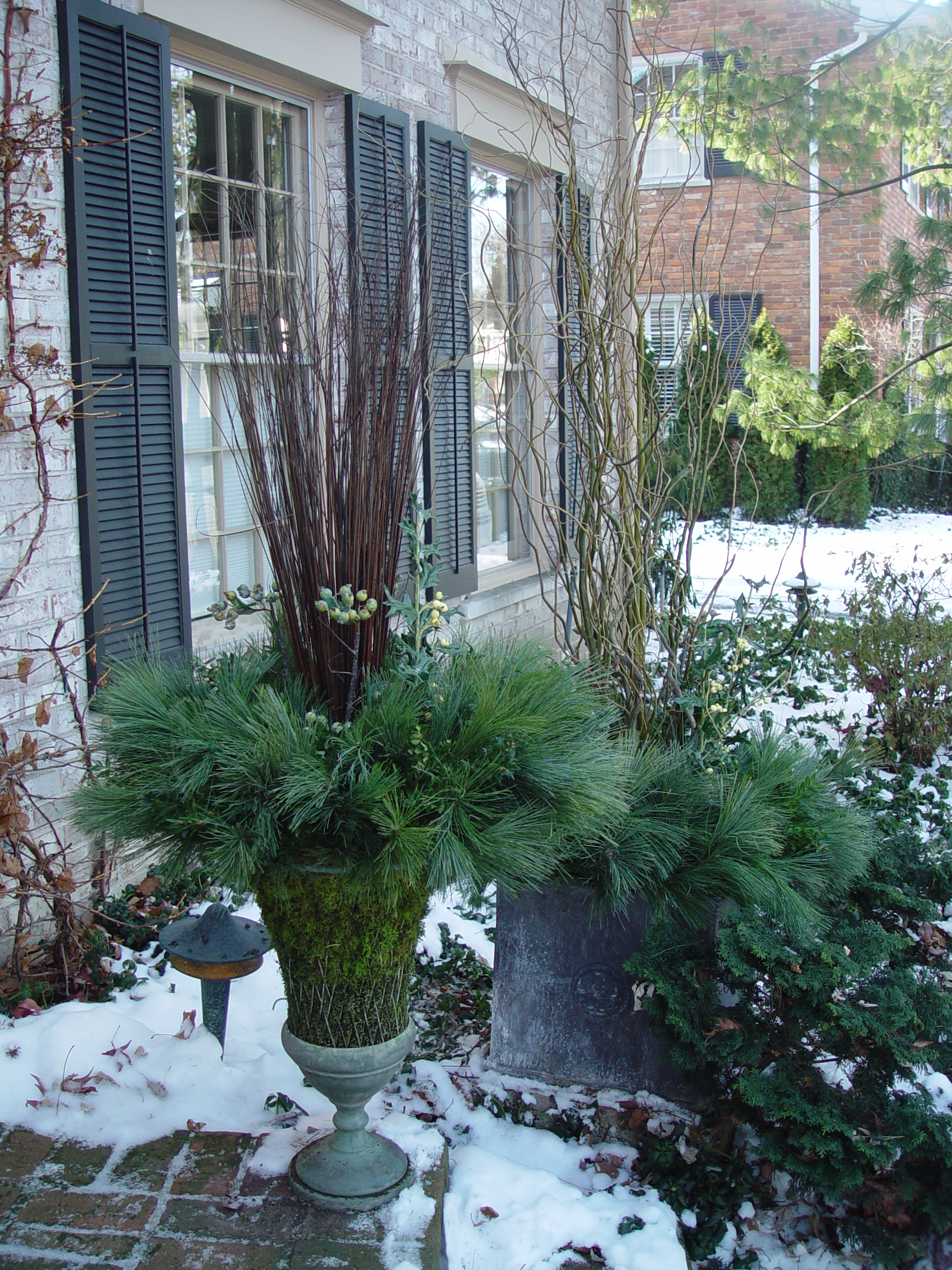
2005 dried grasses, twigs, faux berry picks and cut pine
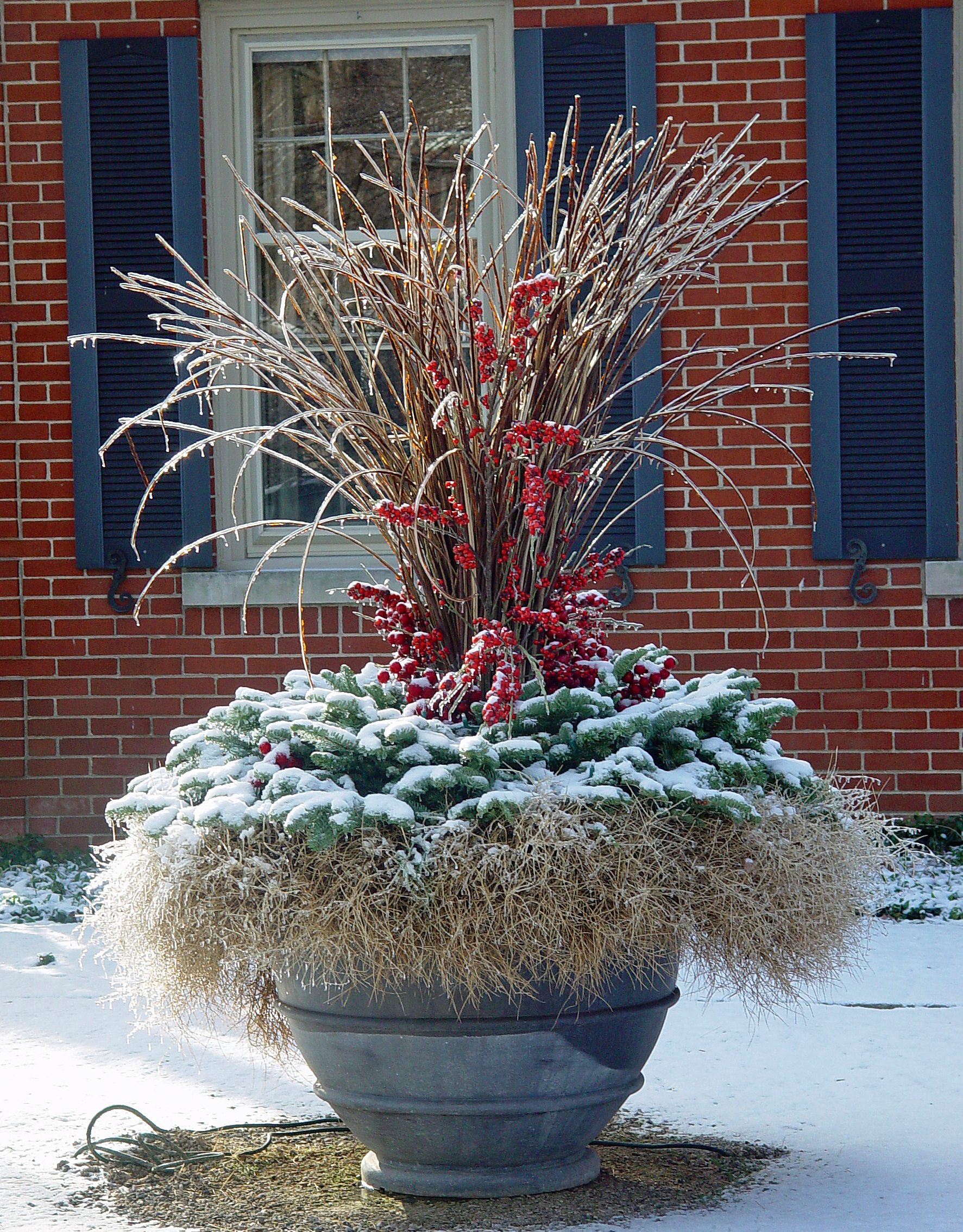
2006 stick stack, berry picks, and fresh noble fir over a large huck wreath.
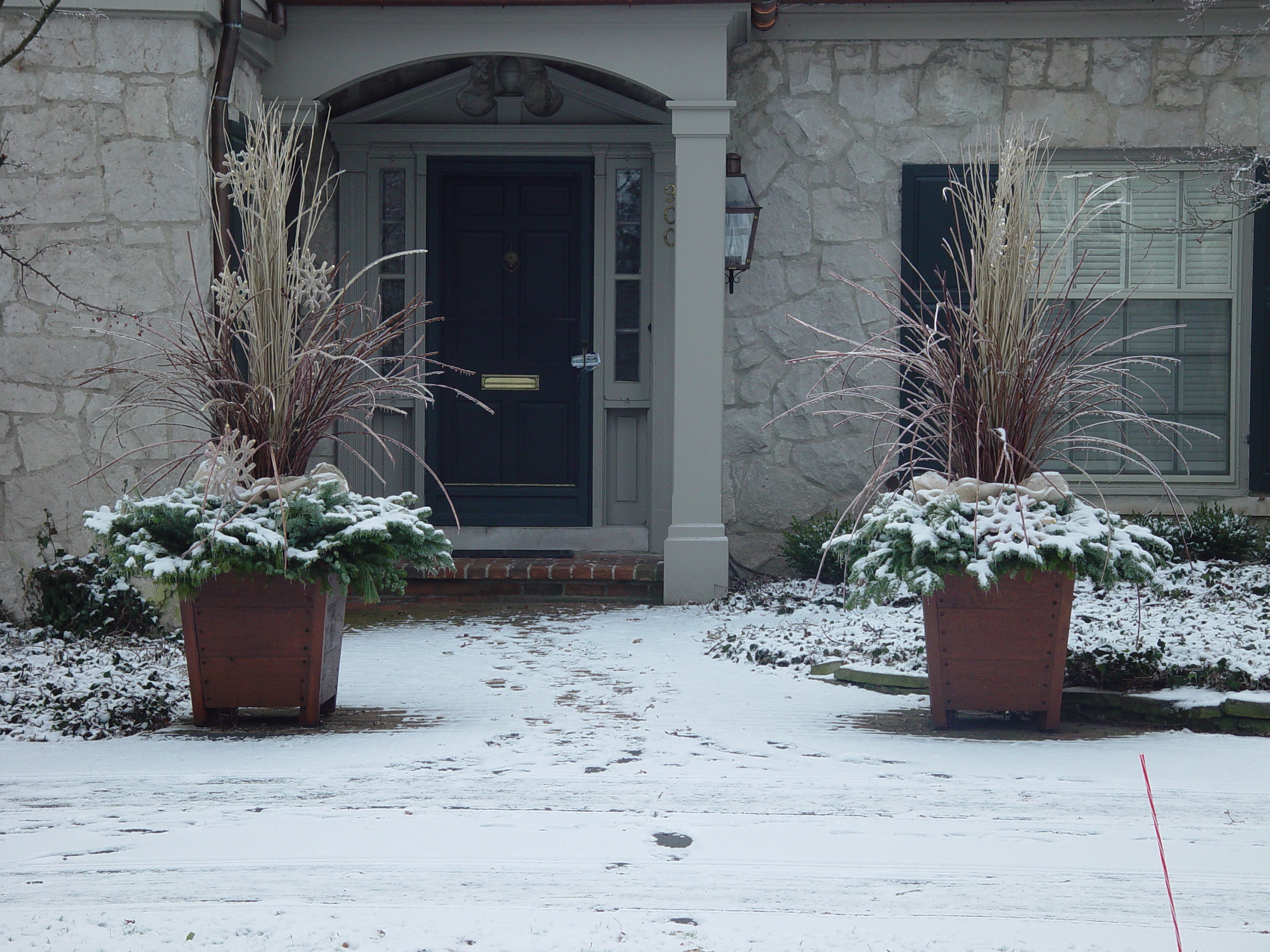
2006 bleached willow twigs, stick stacks, bottle brush snowflakes and gold poly mesh

2007 a first foray into arranging natural foraged branches

2007 at Detroit Garden Works live juniper topiaries, fan willow and mixed cut greens. We have never been able to source fan willow of this size and with this degree of fasciation, again – it was locally grown.
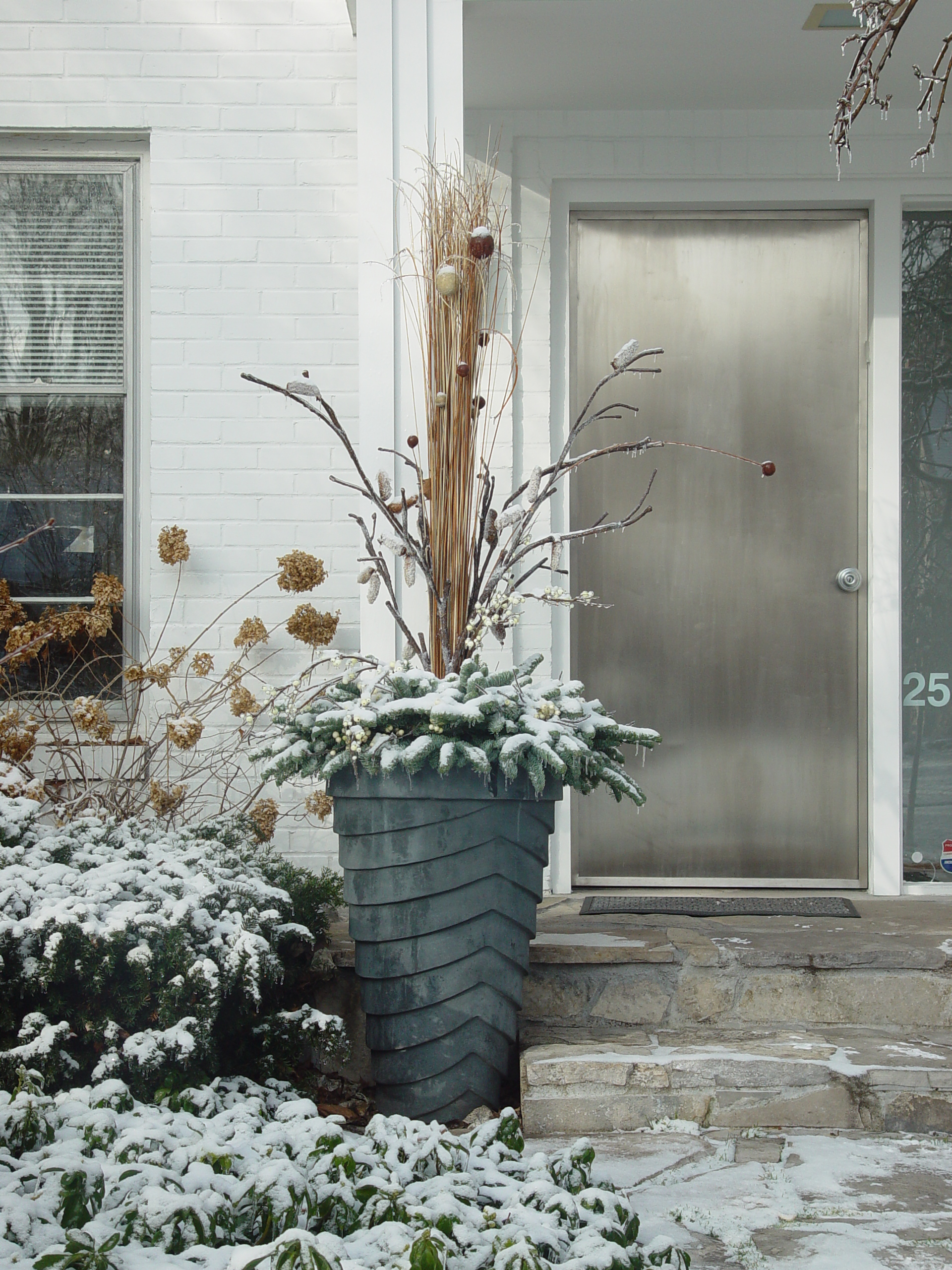
2007 contemporary stoneware pot by Francesco del Re filled with various contemporary sticks and stacks.

2008 red twig dogwood, red berry picks, fresh silver dollar eucalyptus set into cut noble fir boughs

2008 yellow twig dogwood and eucalyptus stems and pods

2009 red twig dogwood, faux red twig picks, magnolia branches and mixed evergreen boughs
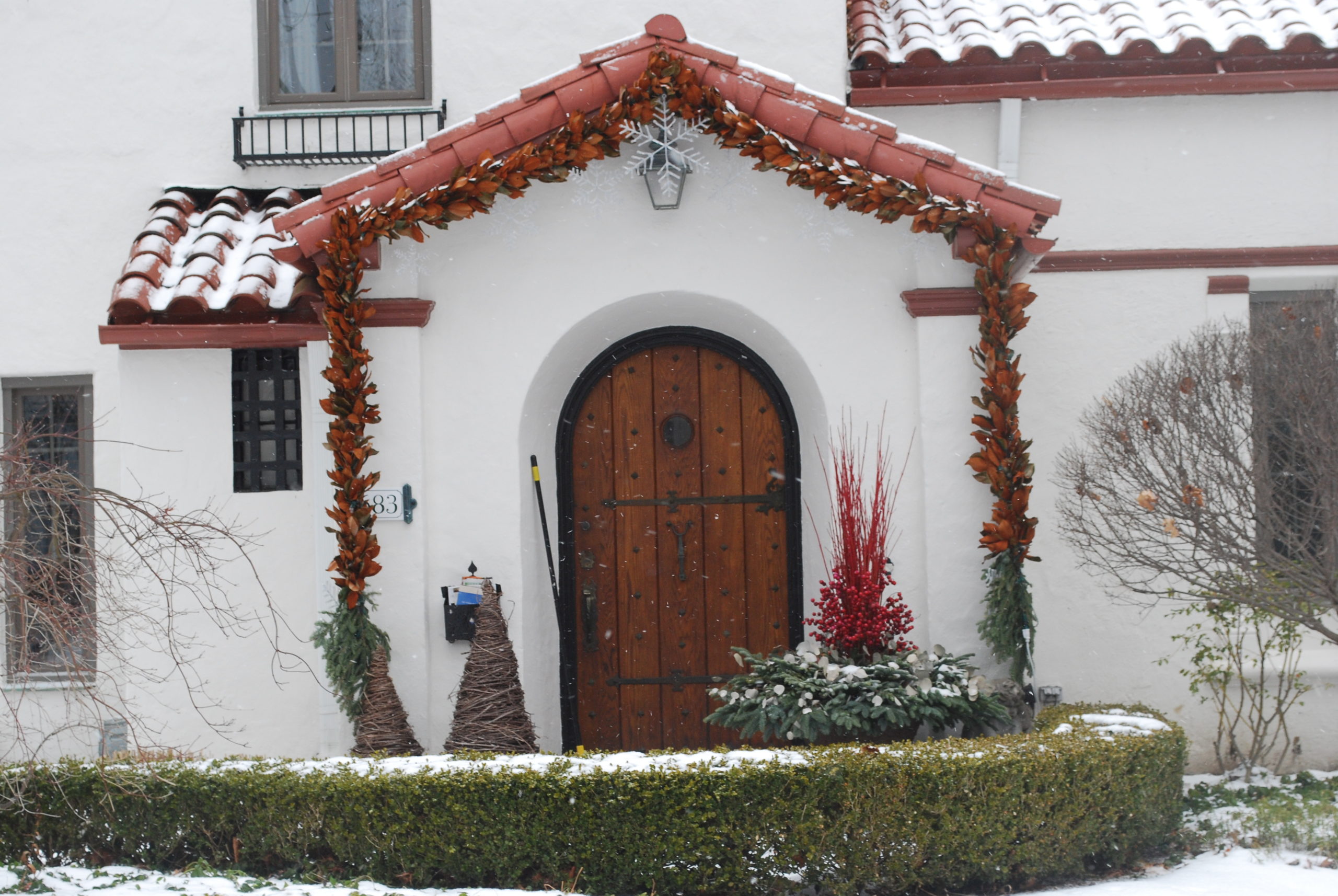
2010 magnolia garland, red twig dogwood and red berry picks

2011 un-branched red twig dogwood, magnolia, boxwood, fresh cut winterberry and noble fir
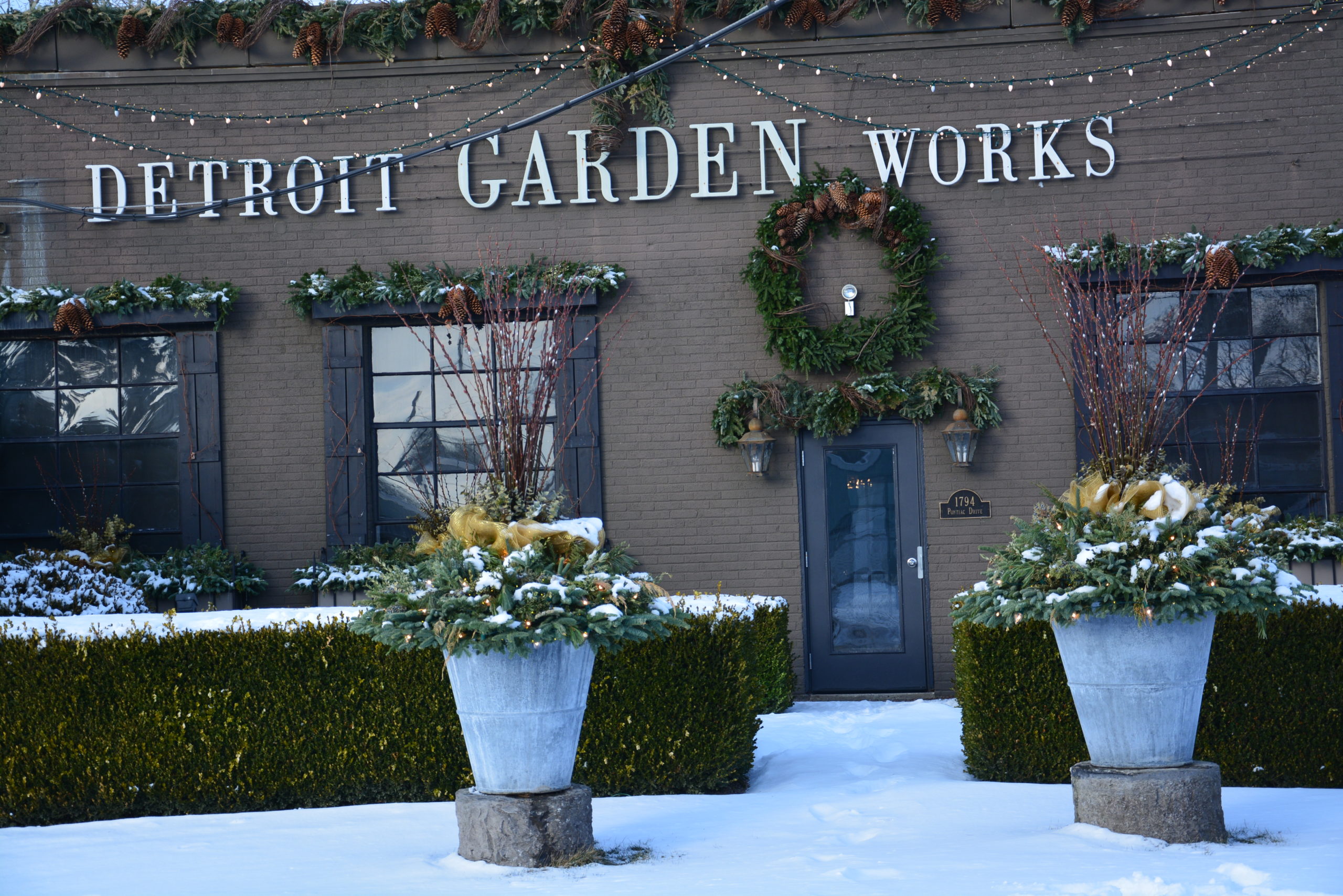
2011 Detroit Garden Works gold deco mesh enlivens fresh cut pussy willow, greens, and pine cones
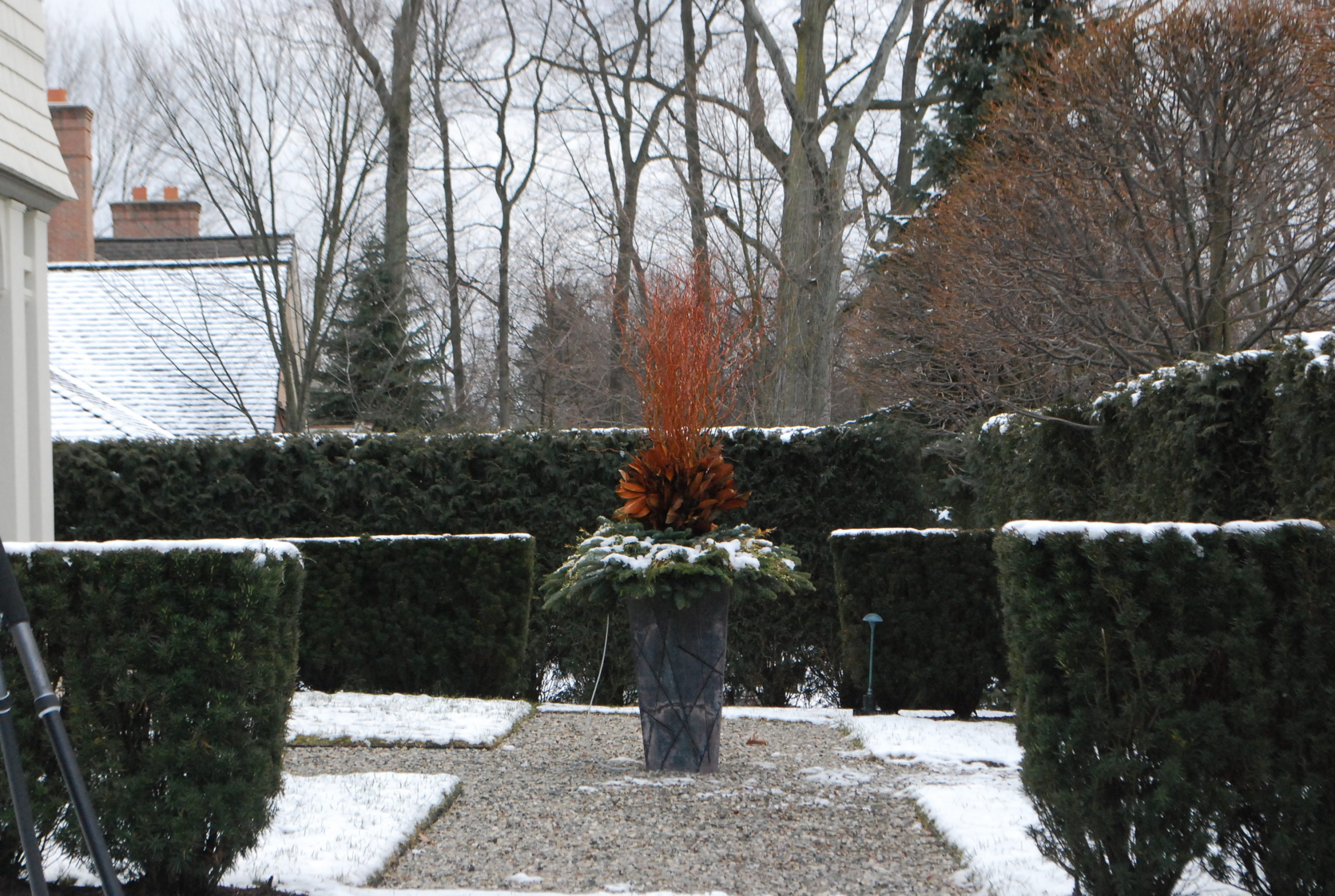
2012 copper curly willow and magnolia branches – and mountain hemlock all around
 2013 Tall red bud pussy willow, red preserved eucalyptus and mixed greens
2013 Tall red bud pussy willow, red preserved eucalyptus and mixed greens

2013 red bud pussy willow, lilac preserved eucalyptus, magnolia and noble fir
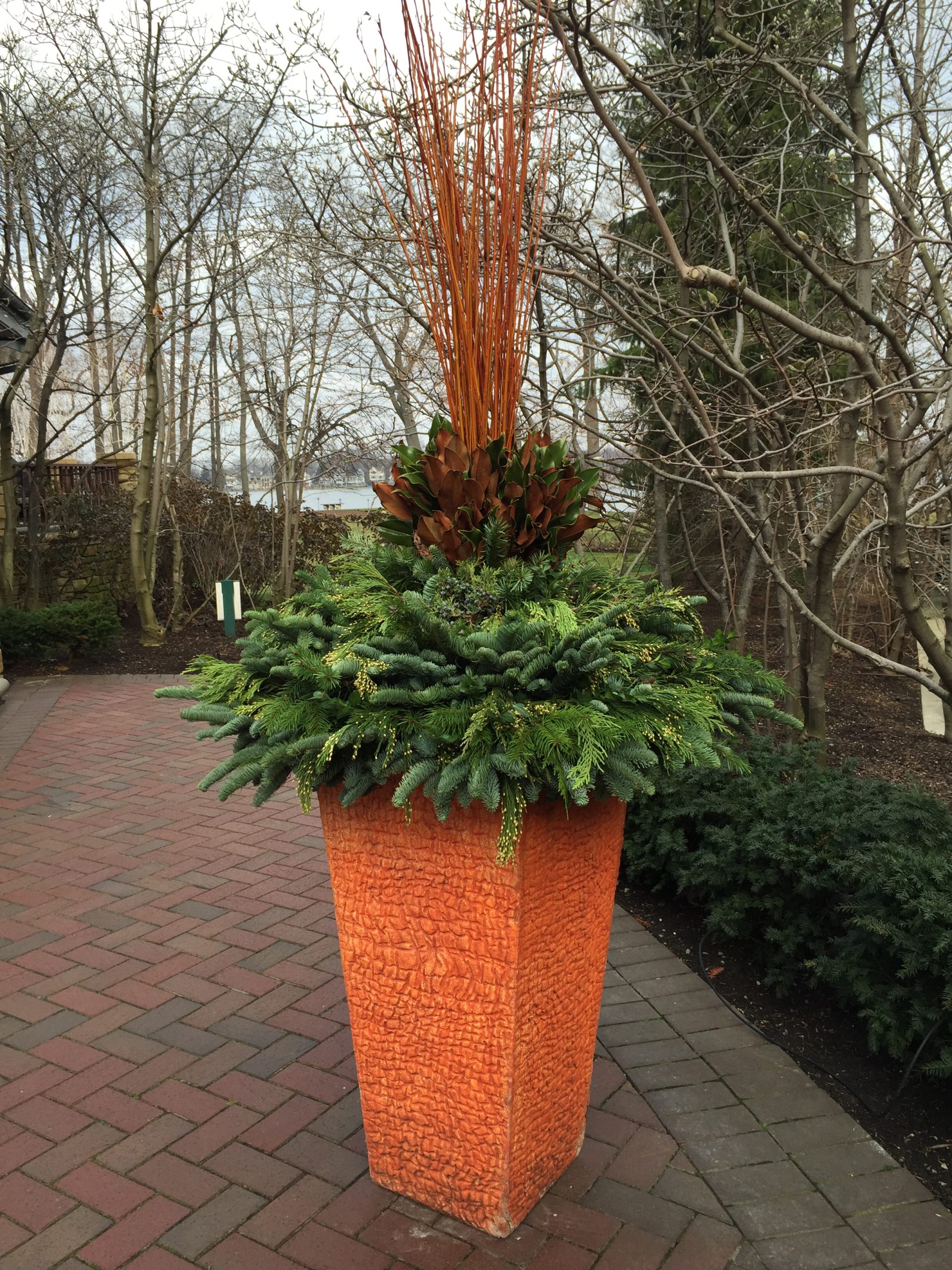
2014 flame willow, magnolia branches and mixed cut greens-

2014
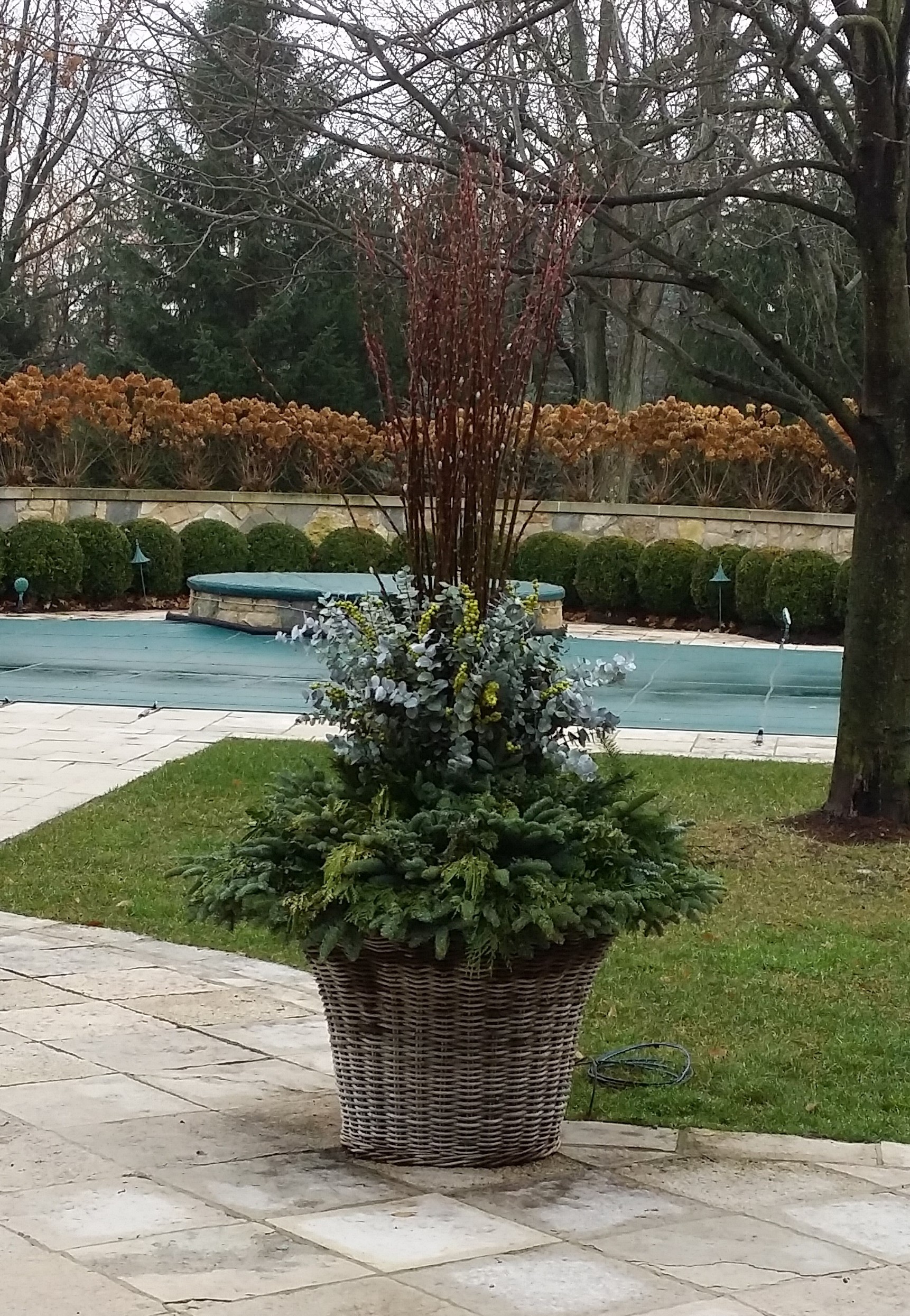
2015 lime green faux berry picks and pale blue gray preserved eucalyptus. The basket planter is Dutch made.
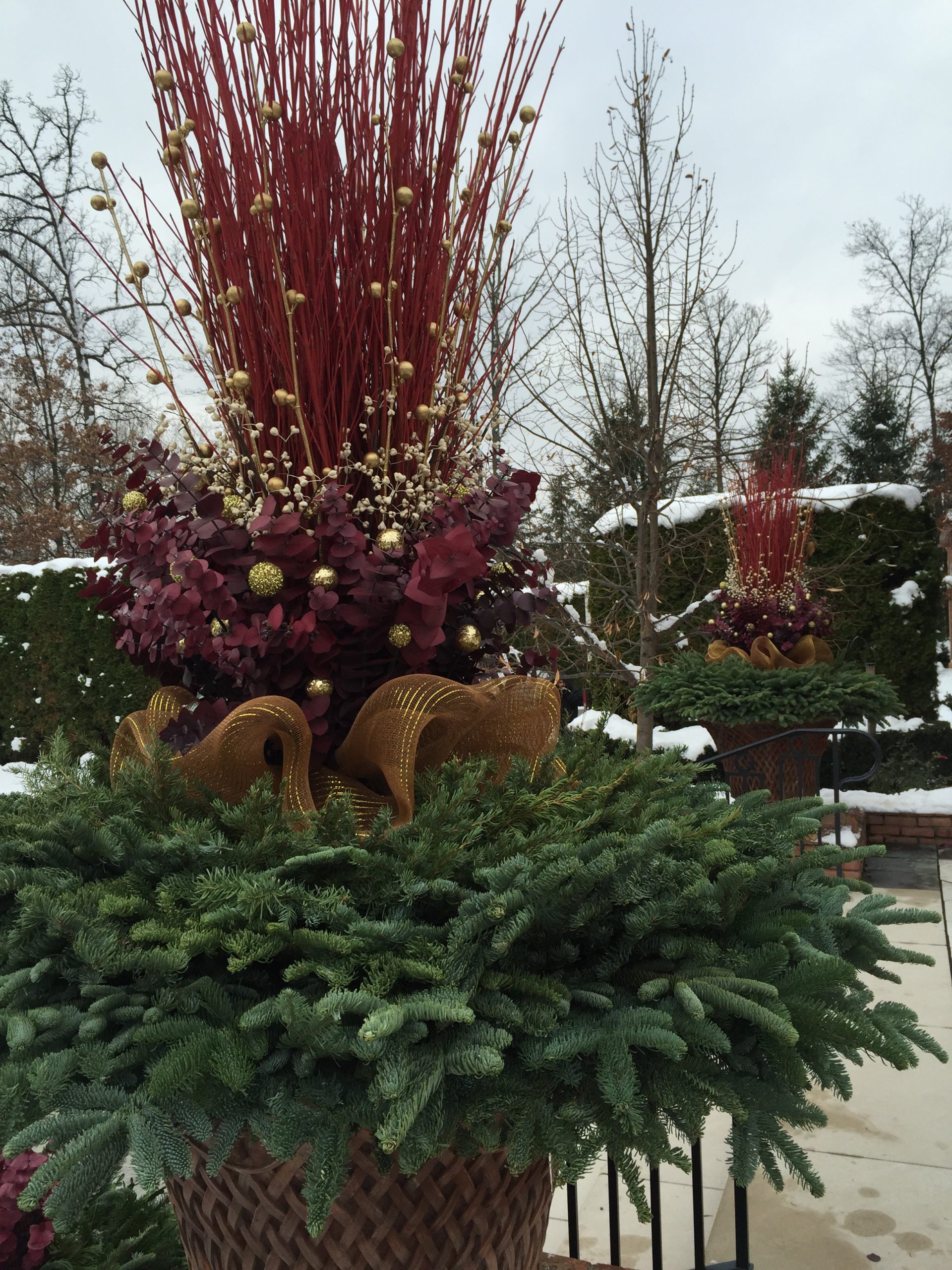
2015 with the Christmas holiday in mind
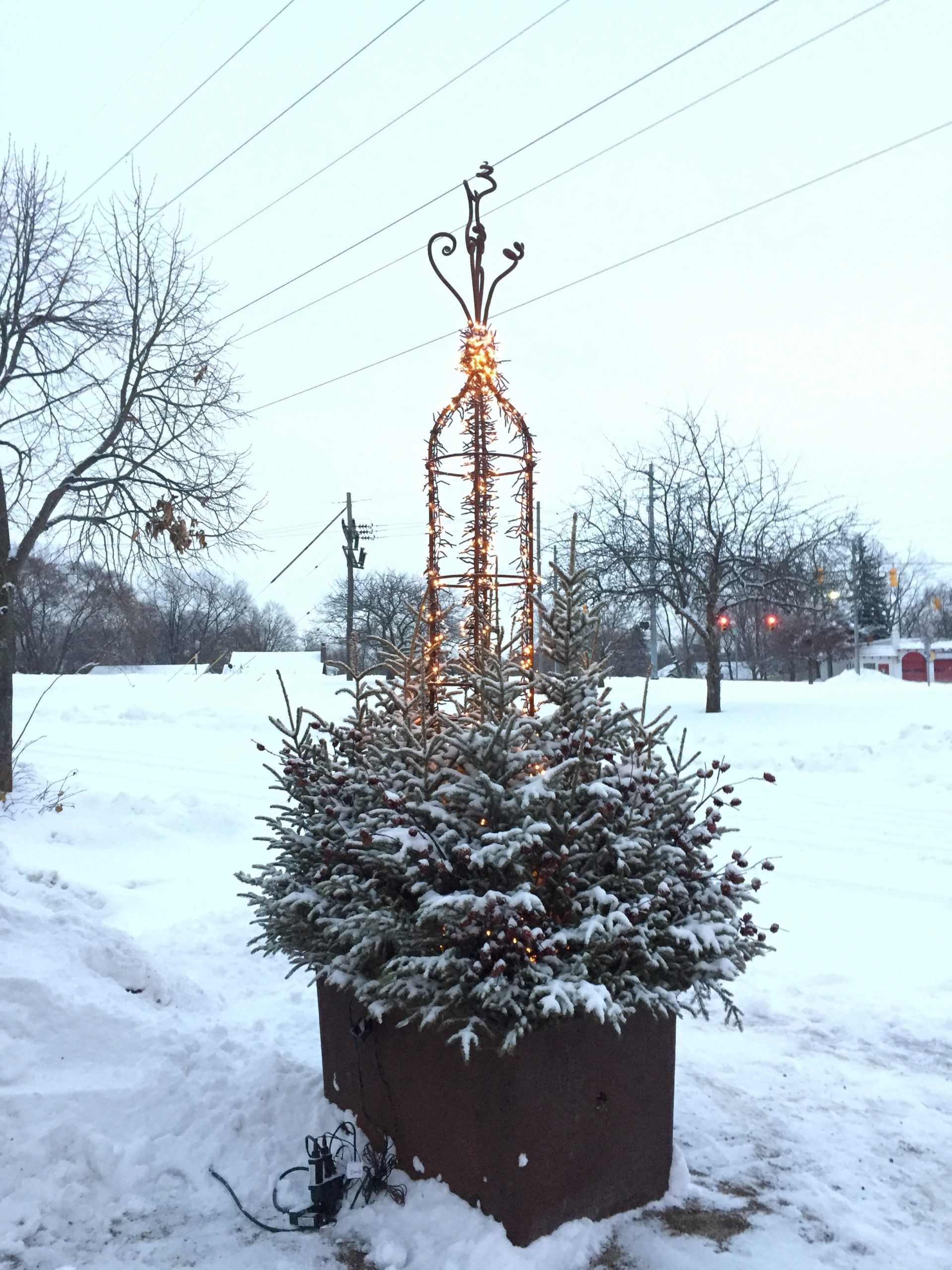
2016 English made steel topiary form with lights, spruce tips, and snow
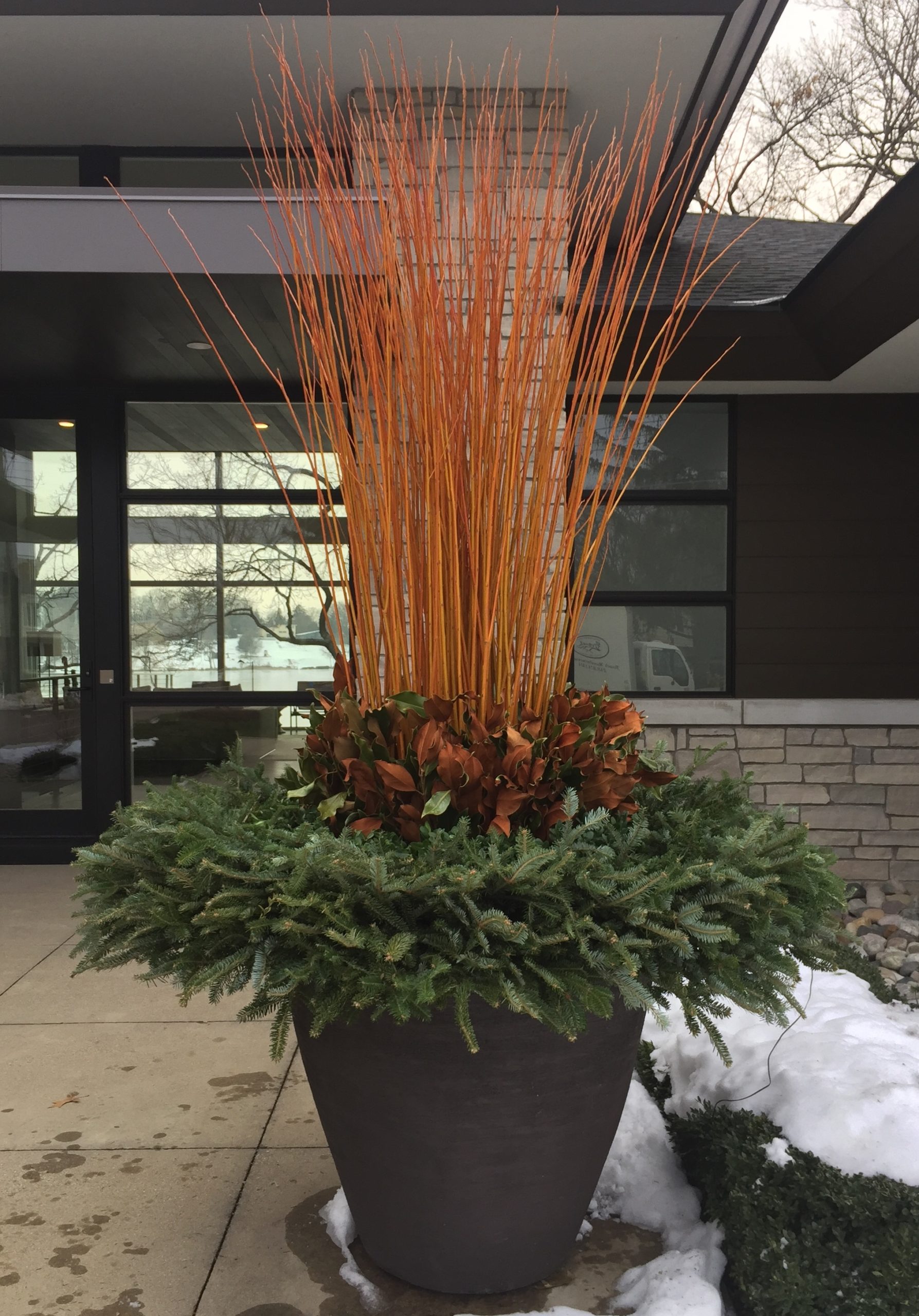
2017 flame willow, magnolia and spruce branches

2017 yellow twig dogwood, yellow fuzz ball picks, white eucalyptus, variegated boxwood in a large corten steel planter box
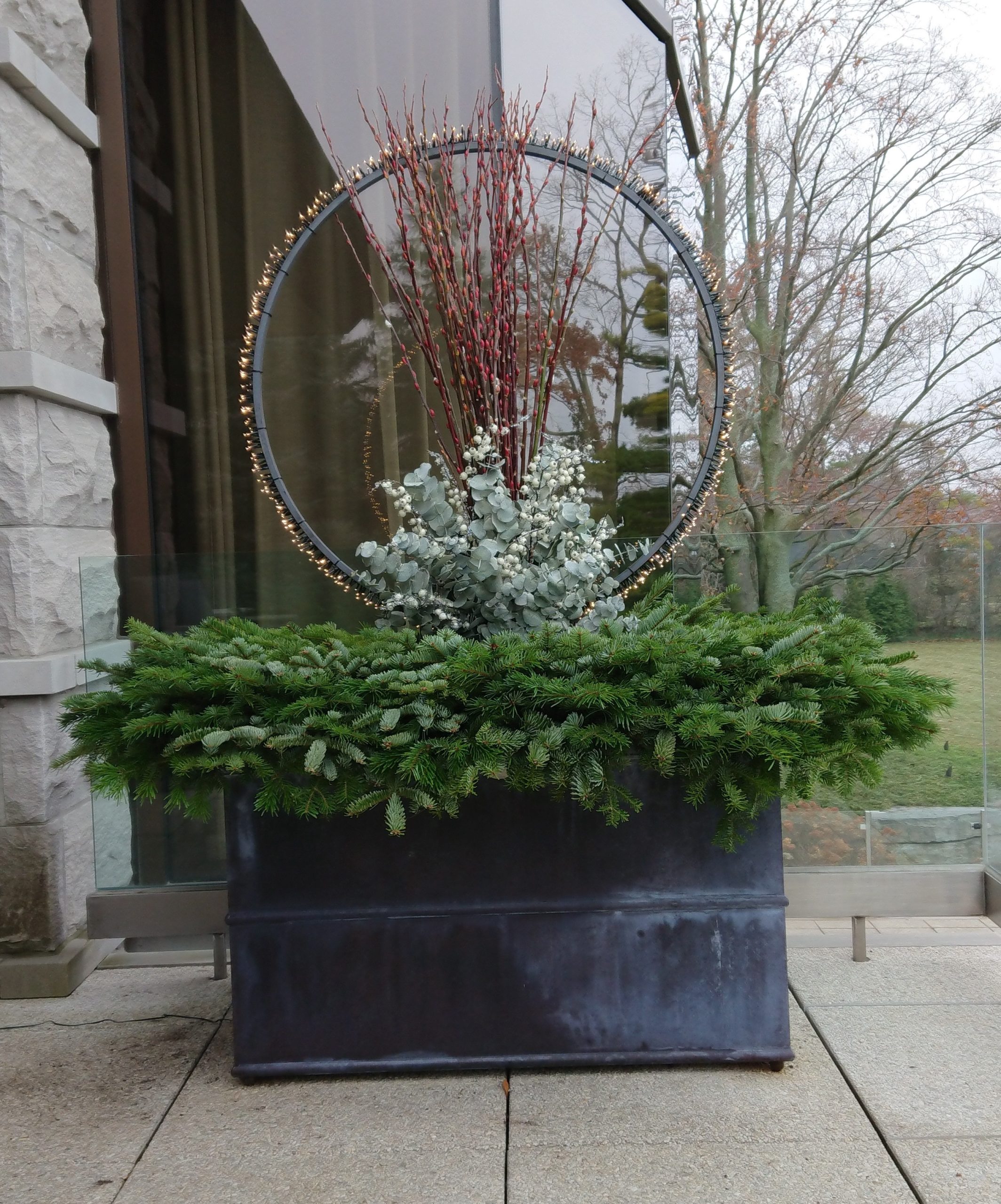 2018 3′ diameter lighted ring over a mix of silver and noble fir
2018 3′ diameter lighted ring over a mix of silver and noble fir
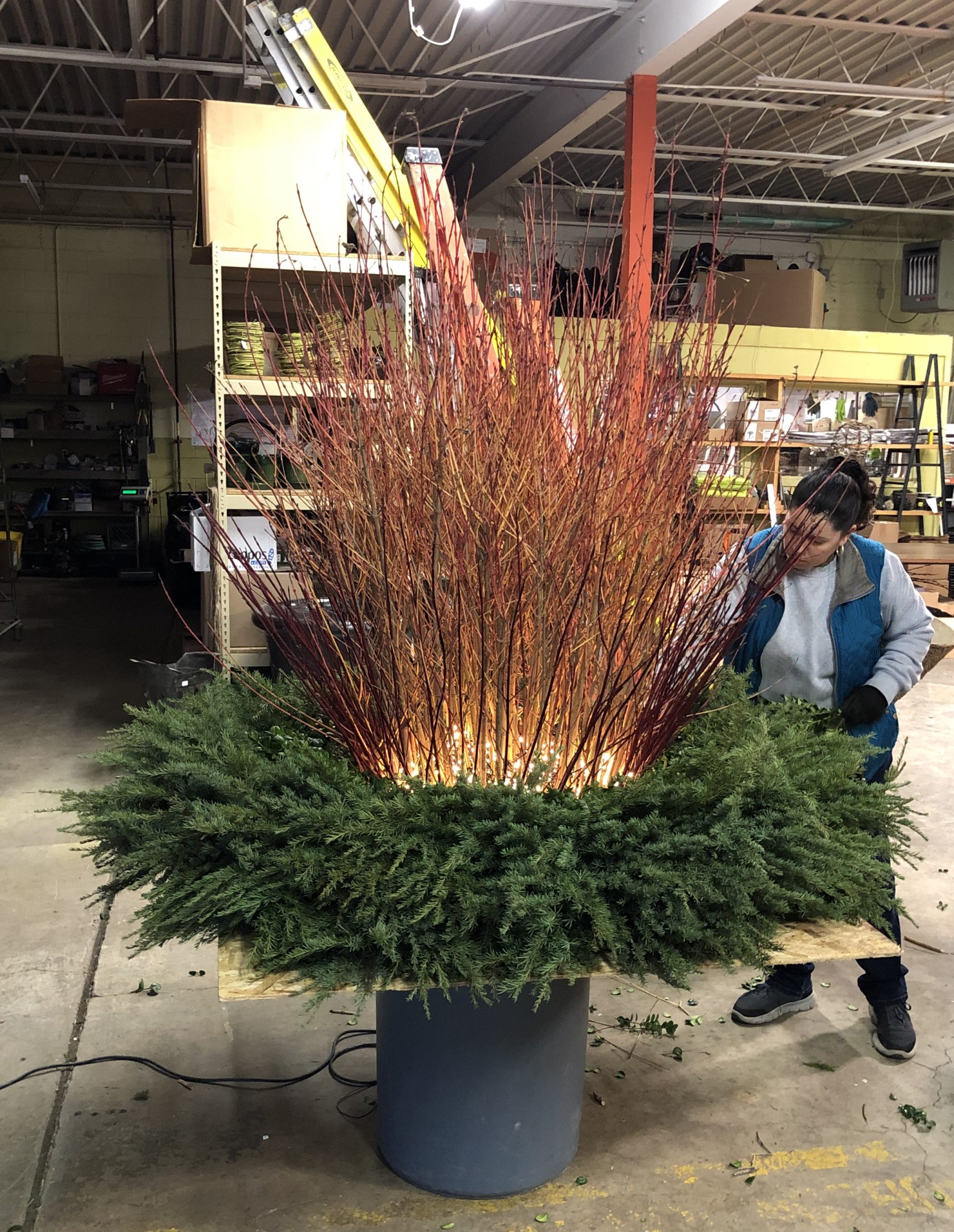
2018 a thicket of “midwinter sun” dogwood branches and mountain hemlock
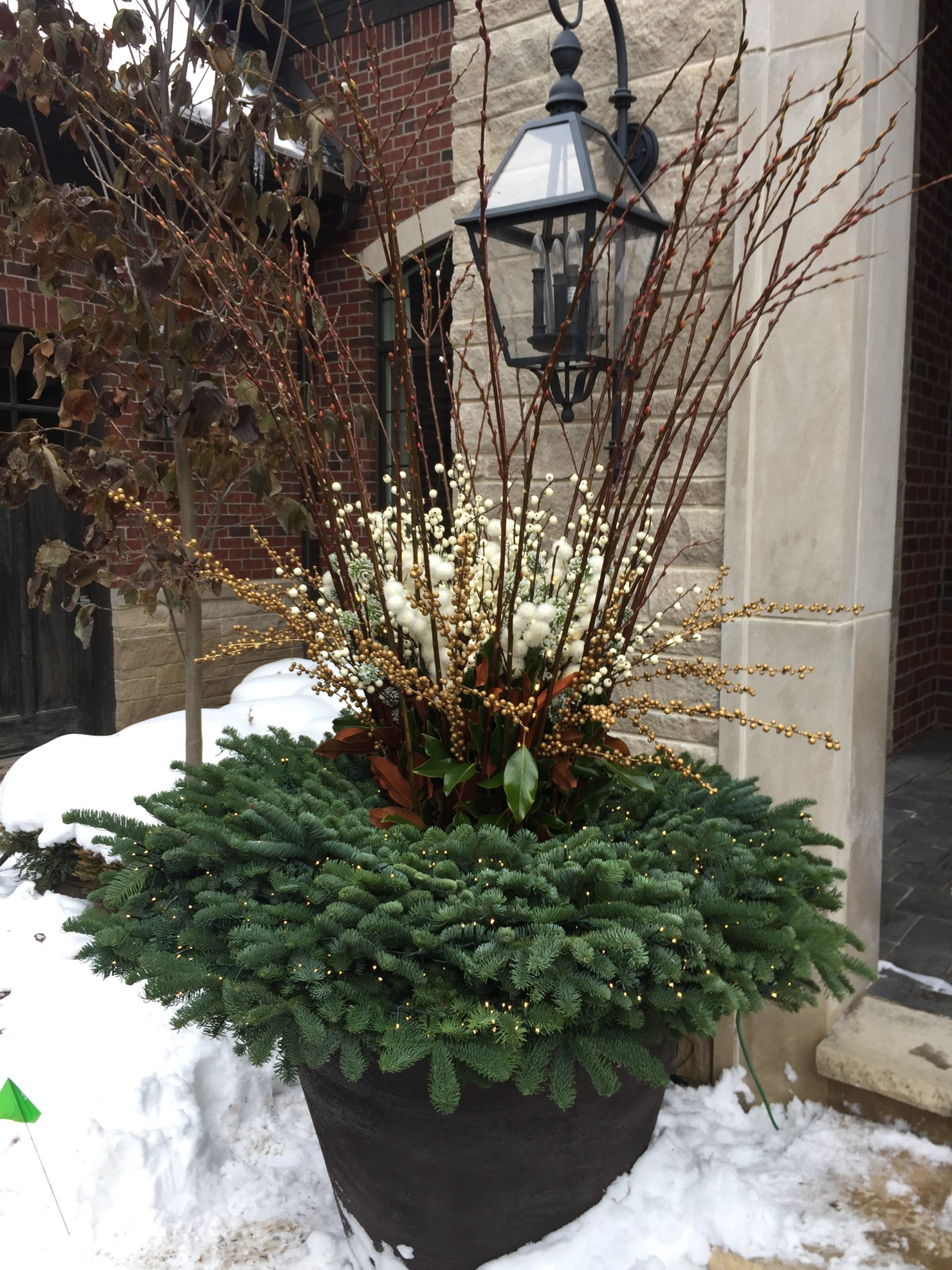
2019 a sparse arrangement of red bud pussy willow, green and white fuzz ball picks, gold and white berry picks and magnolia
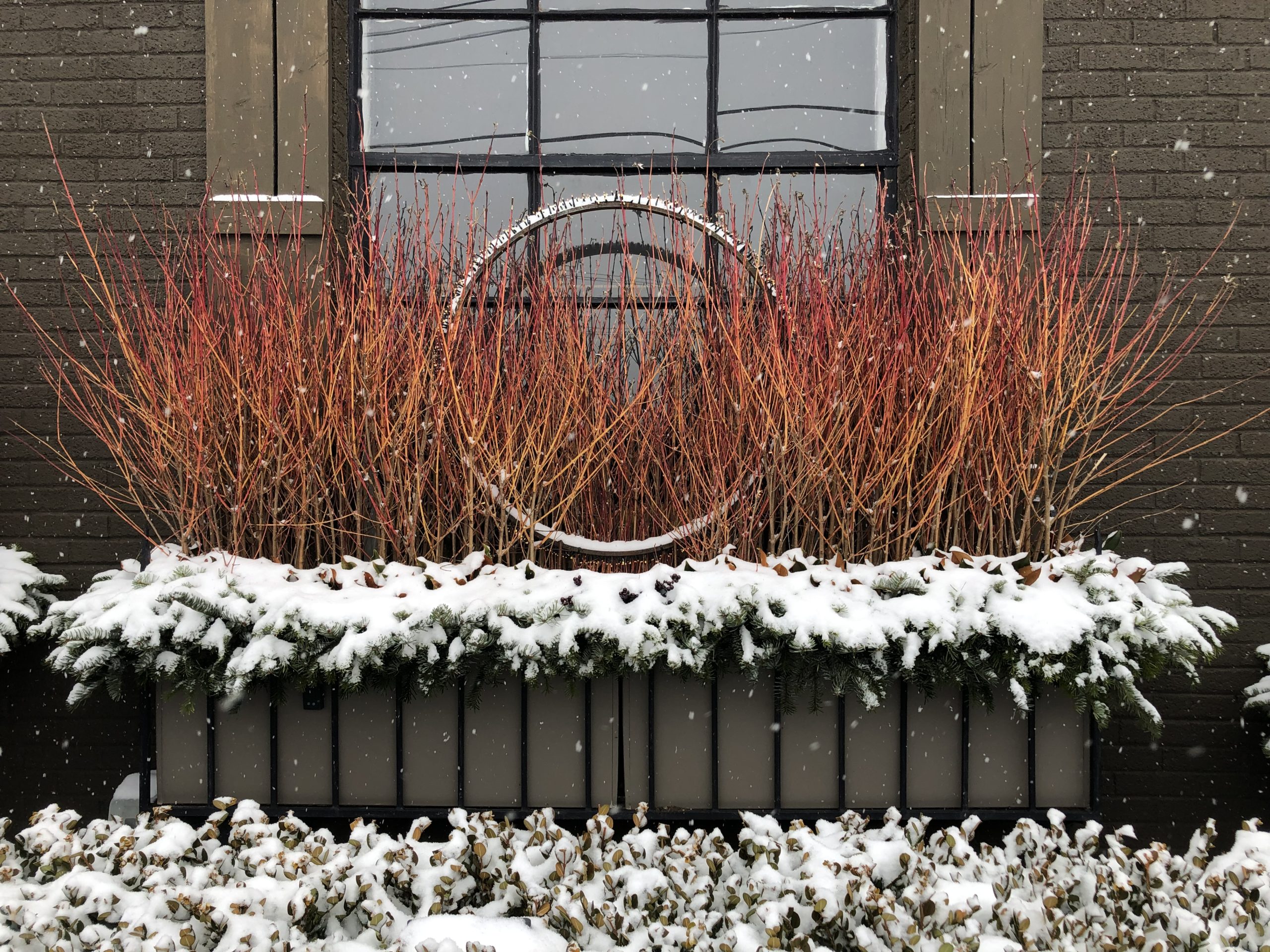
2019 “midwinter fire dogwood branches and a light ring
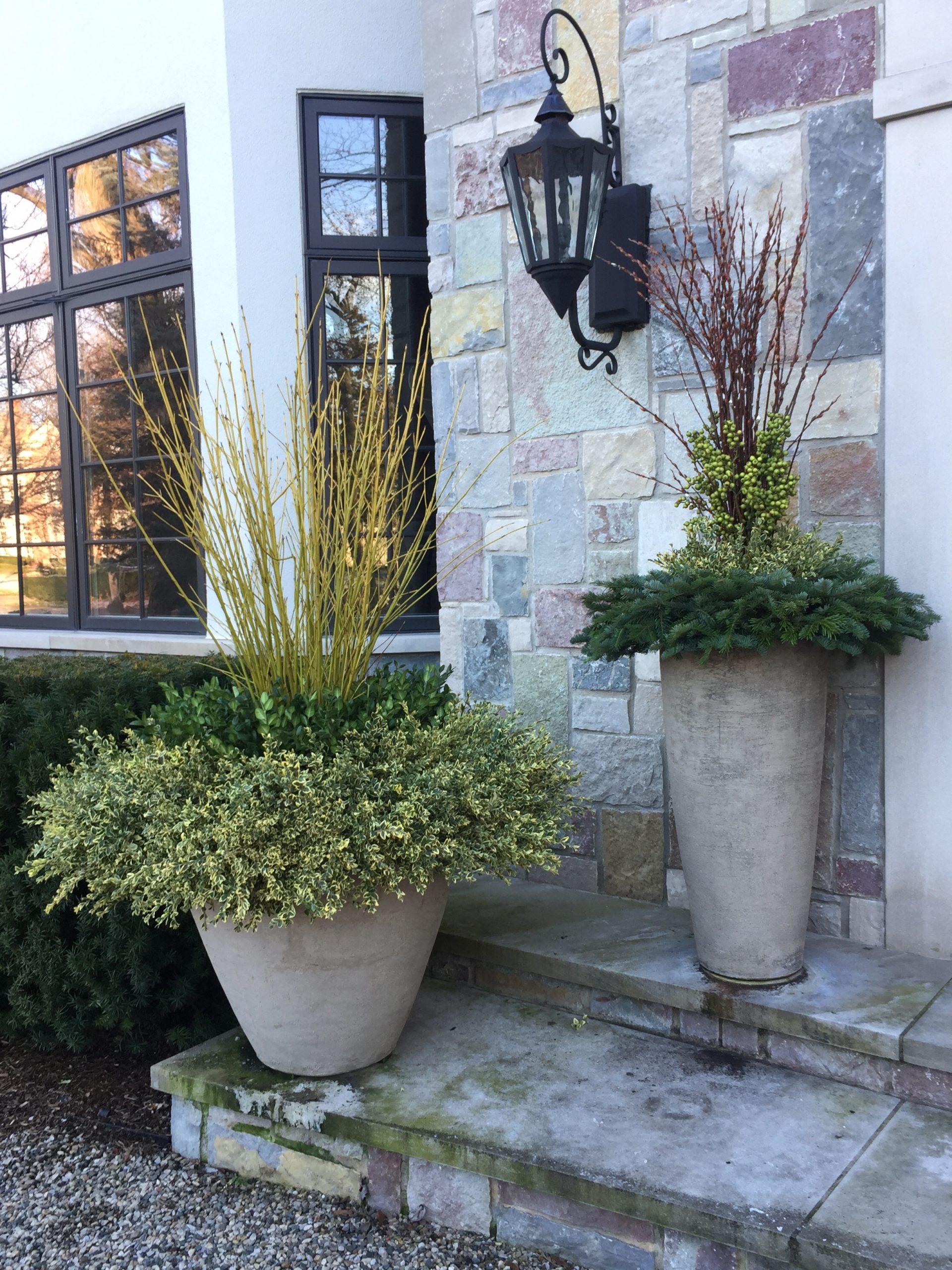
2019 yellow and green
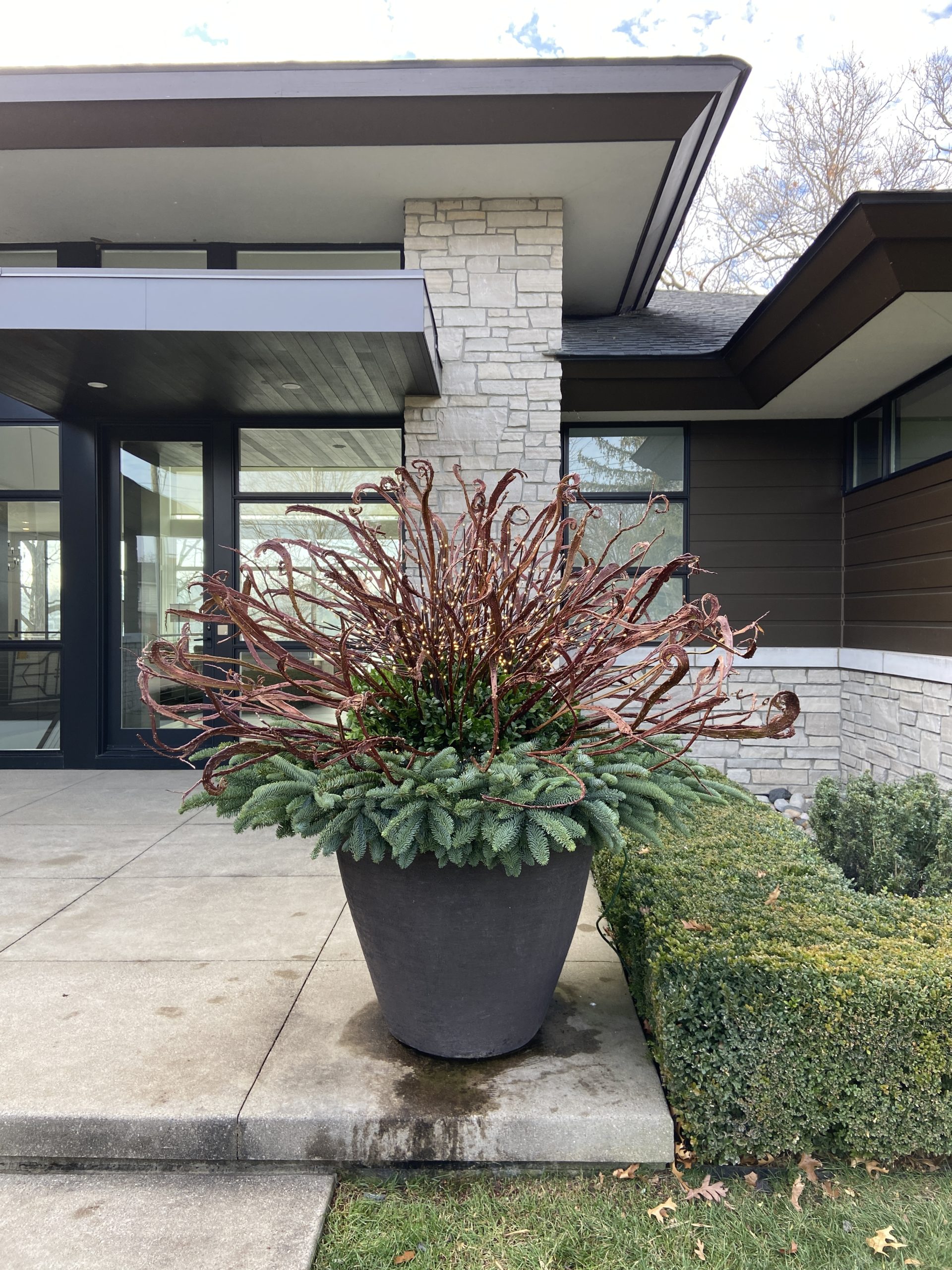
2020 a winter sculpture made of fan willow, boxwood and noble fir

2020 flame willow and large scale snowball picks awash in LED cherry lights
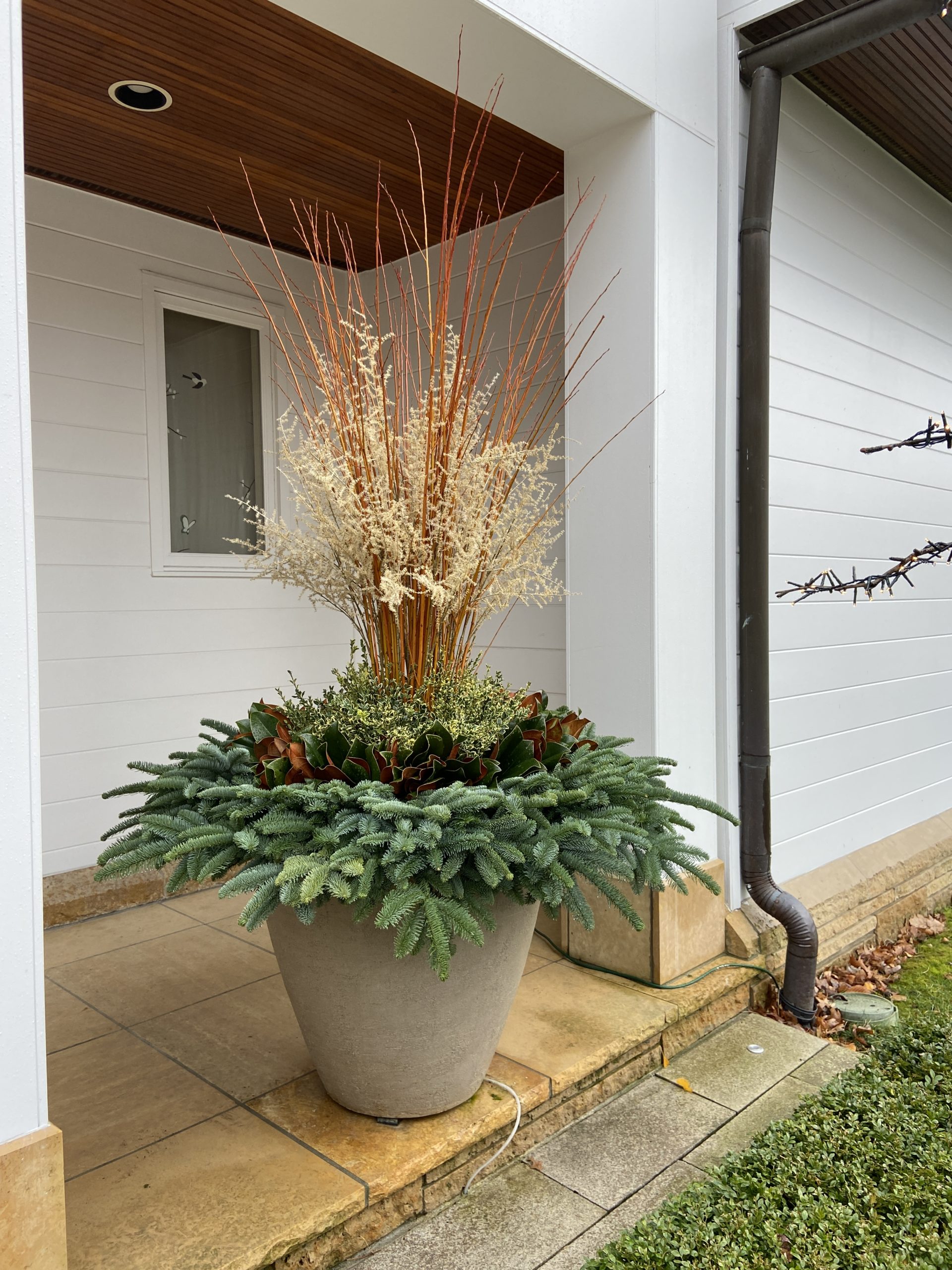
2020 layered look with tall faux astilbe picks
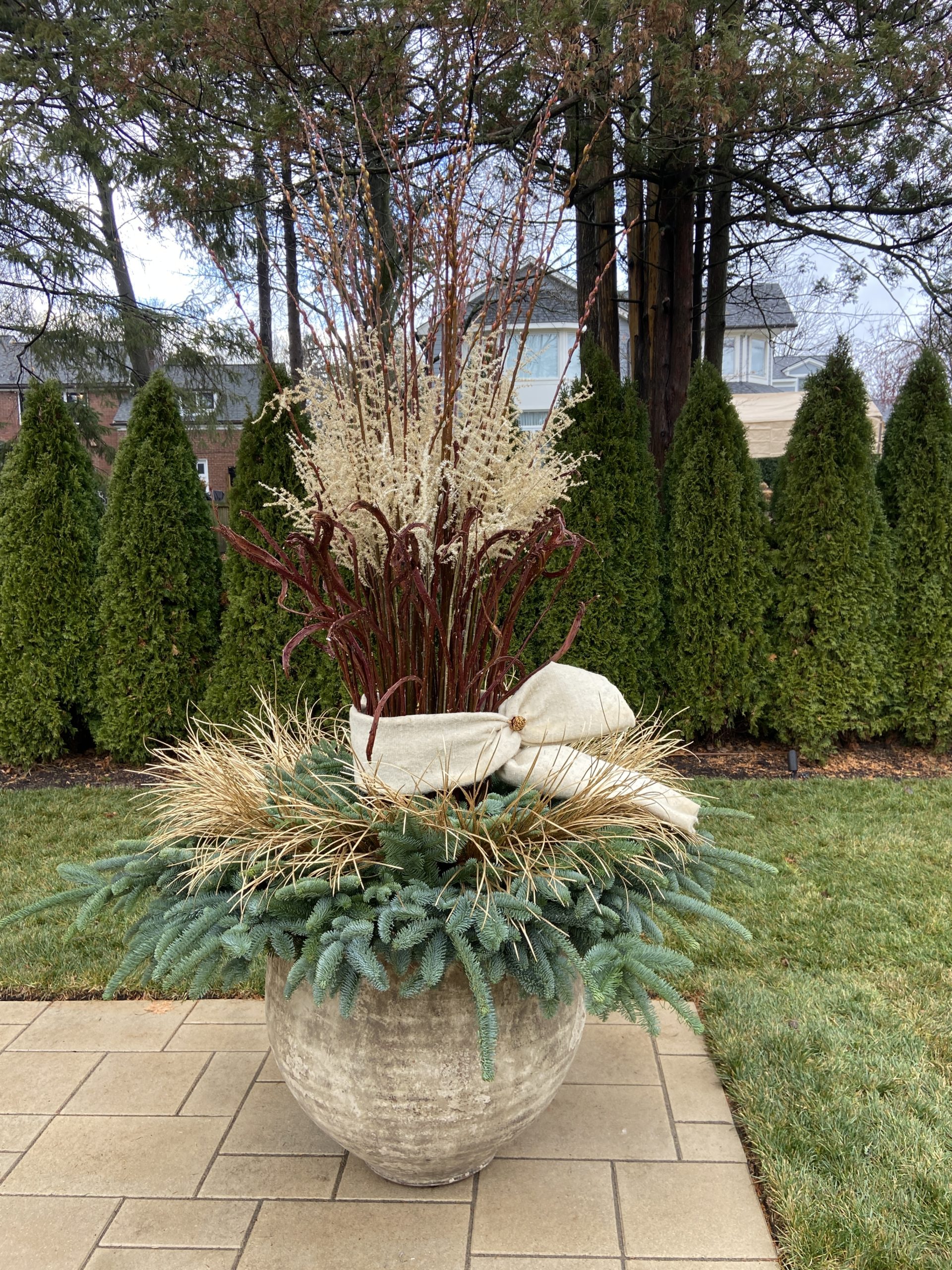 2
2 020 wool felt stole and gold grass picks
020 wool felt stole and gold grass picks
2020 wicker basket pots

2021 bleached sticks of several diameters and heights; white berry picks
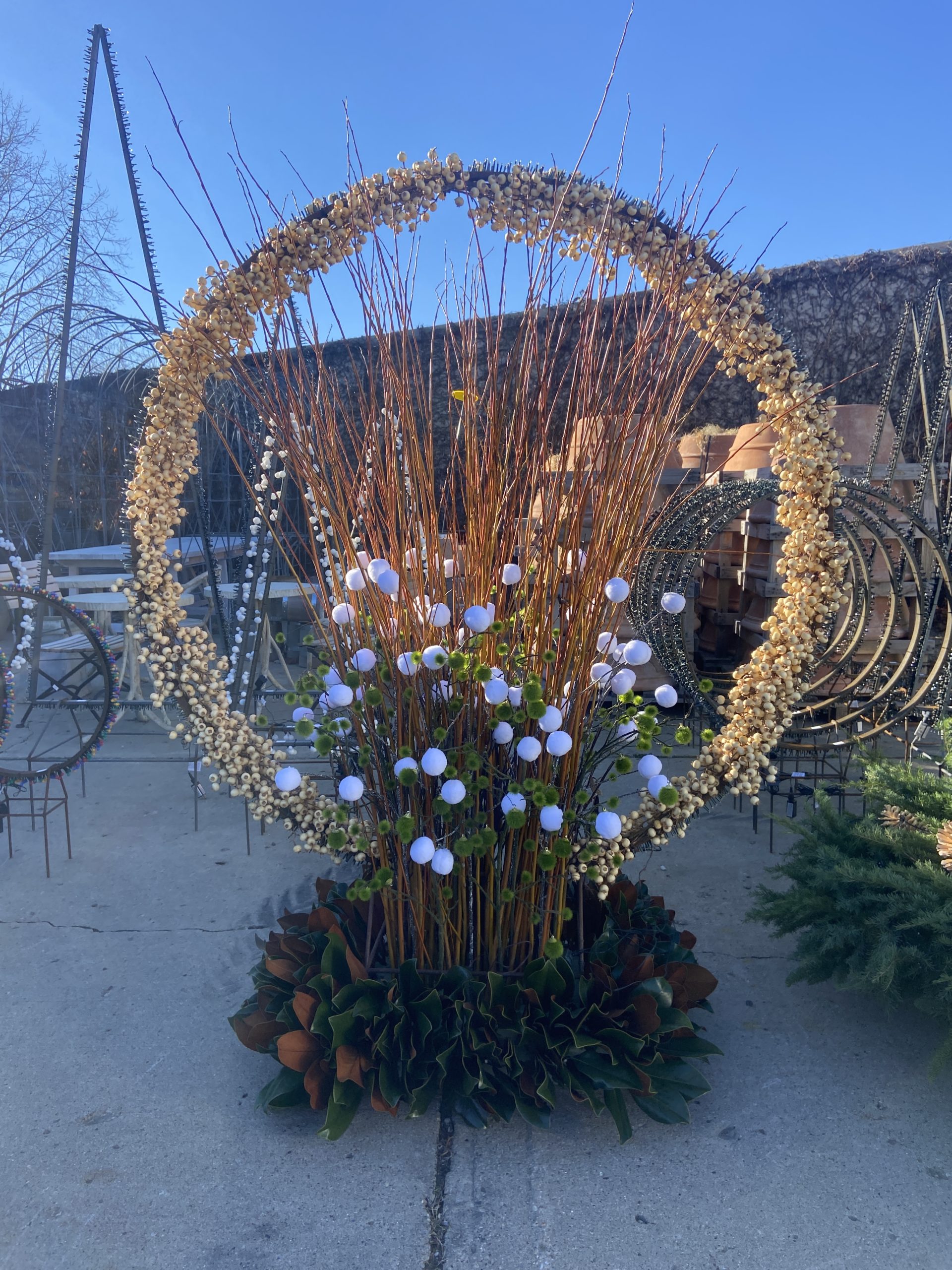
2021 the centerpiece: cream berries lining the interior of a 5′ diameter light ring, twigs, picks and magnolia

2021 3′ diameter light ring, alder branches, stainless steel spheres on stainless stems, silver plastic grass
2021 green and white

2021 evergreen branches set vertically

2021 window boxes with light rings, faux lambs ear garlands, silver plastic grass, blueberry picks, white flower picks-and beaded stars. Very keen to see what will come next.
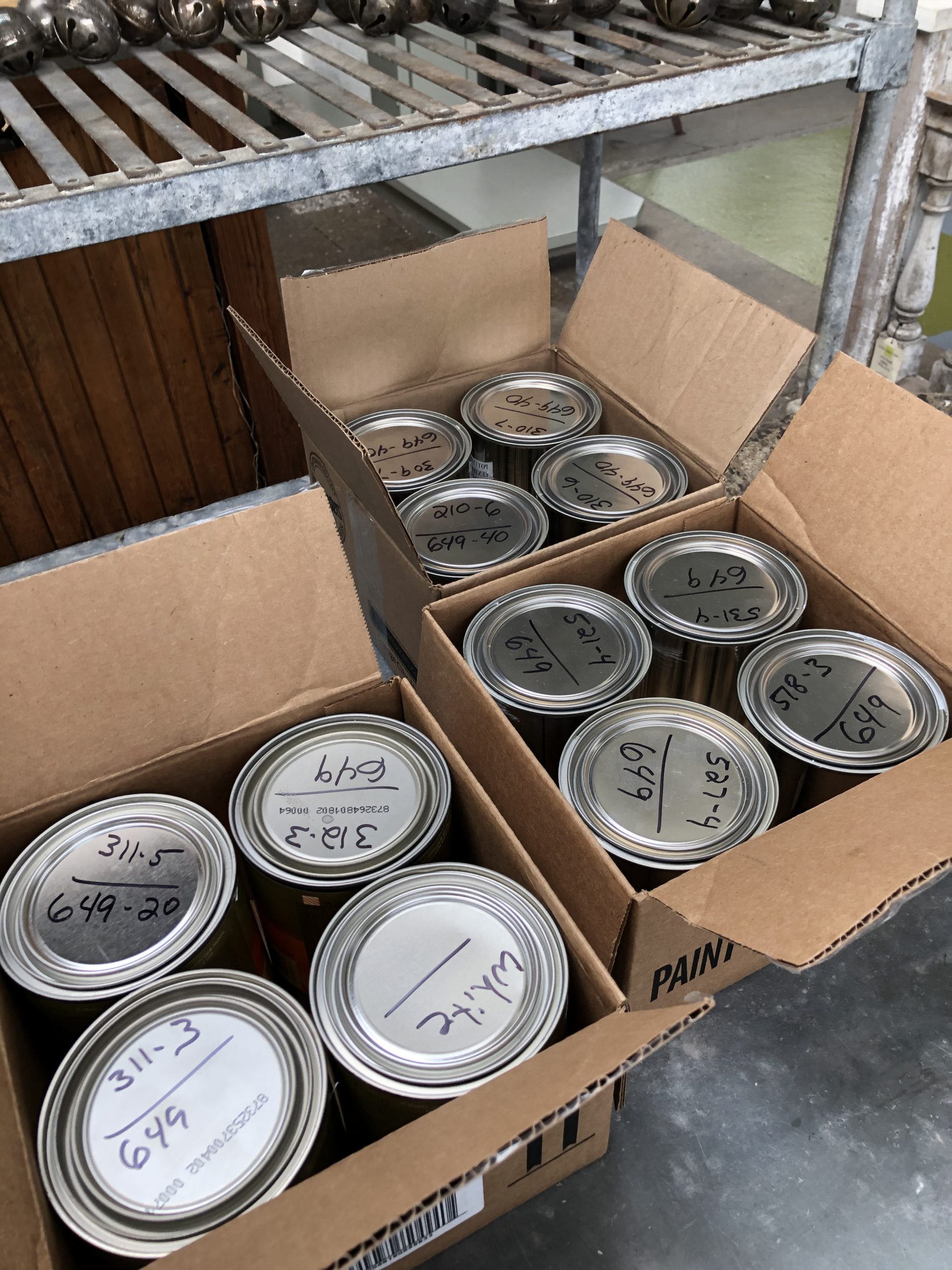
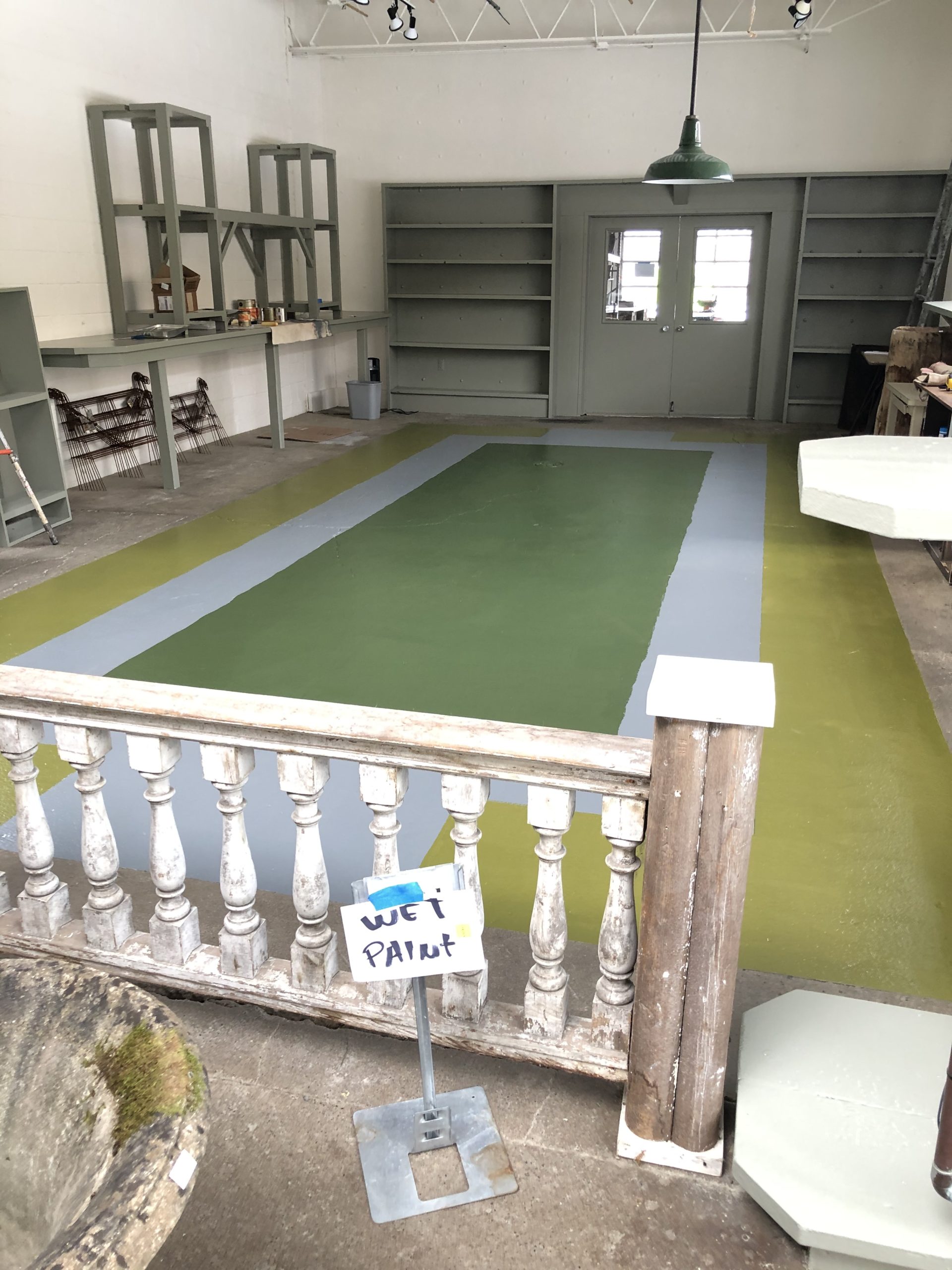
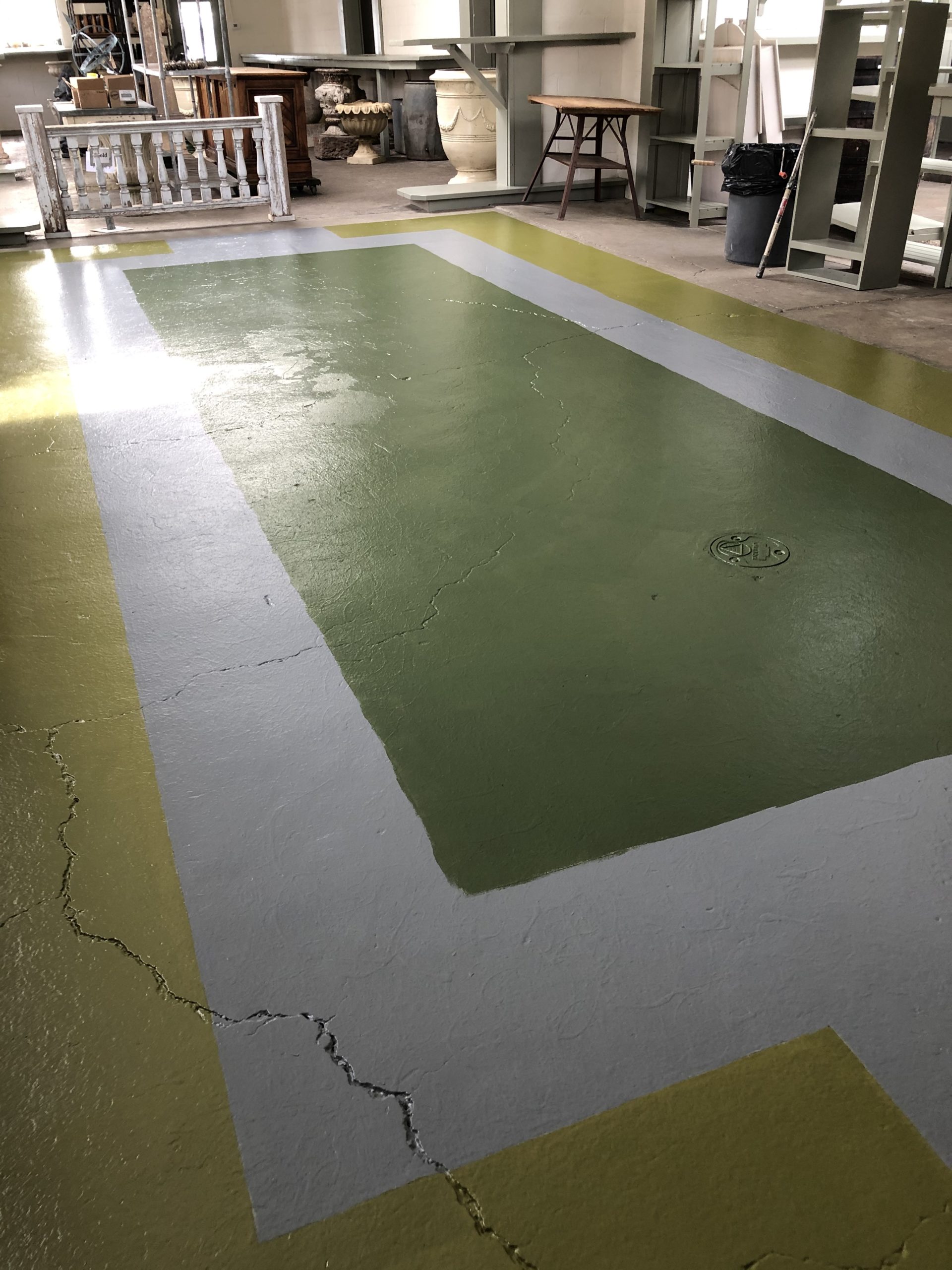 This picture clearly shows the largest area of wear sustained by the previous floor. Part of our concrete block wall sprung a leak, and water had been sitting in this spot on and off for several years. The rest of that floor was in remarkably good condition. I ascribe that in total to the quality of the paint. Porter Paint, routinely used by sign painters, comes in a 100% acrylic formula which hardens much more than latex paint. Owned by PPG, Porter’s exterior Acri-Shield paint is exceptionally durable and comes in a vast number of colors. It is eminently strong enough to use as a floor paint. Happily, one of a few paint stores in Michigan that carries this paint is near us. See more about this great paint store here:
This picture clearly shows the largest area of wear sustained by the previous floor. Part of our concrete block wall sprung a leak, and water had been sitting in this spot on and off for several years. The rest of that floor was in remarkably good condition. I ascribe that in total to the quality of the paint. Porter Paint, routinely used by sign painters, comes in a 100% acrylic formula which hardens much more than latex paint. Owned by PPG, Porter’s exterior Acri-Shield paint is exceptionally durable and comes in a vast number of colors. It is eminently strong enough to use as a floor paint. Happily, one of a few paint stores in Michigan that carries this paint is near us. See more about this great paint store here: 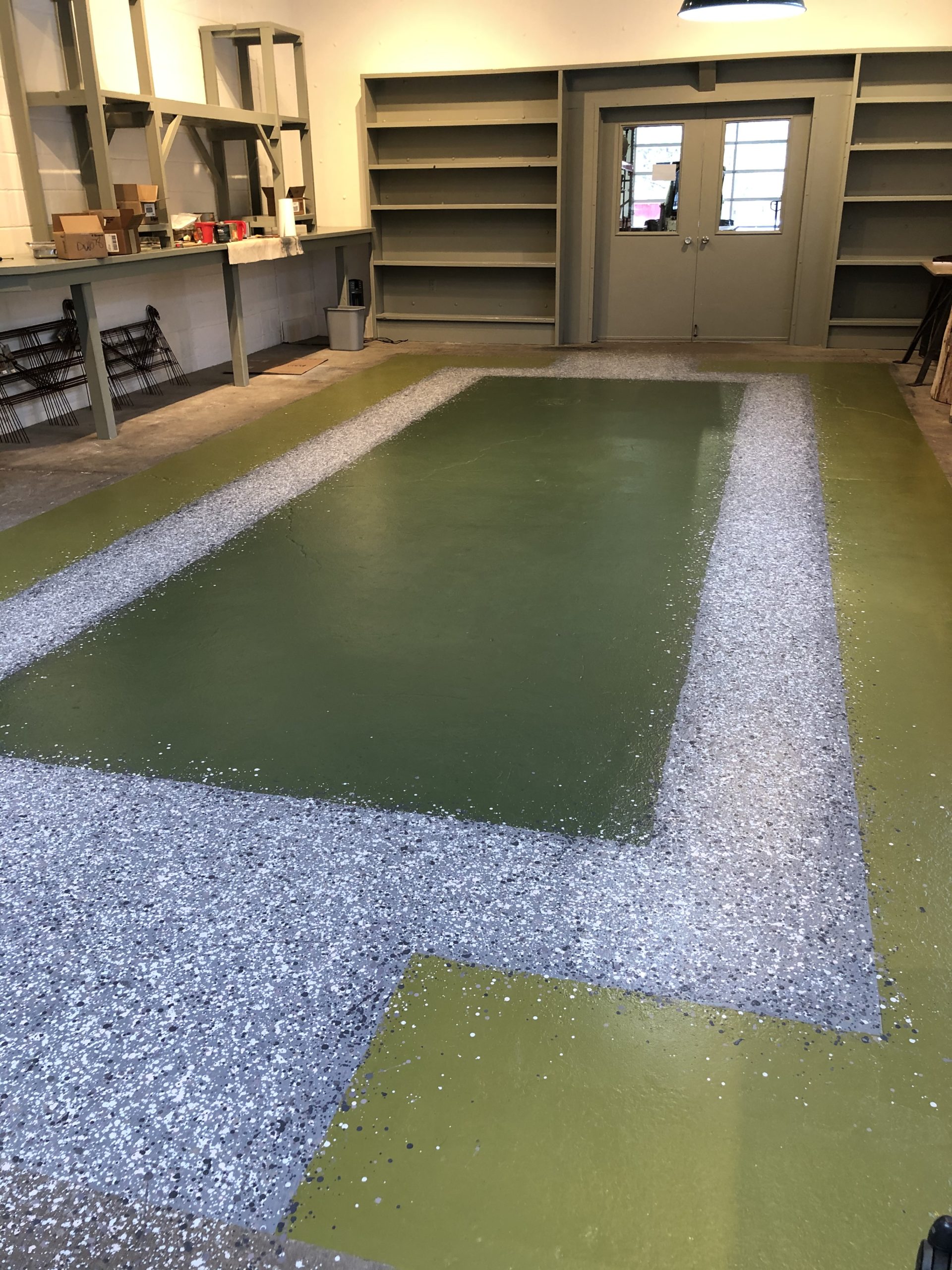 The floor would have but a few elements. A grassy plane, admirably described by the French as a “tapis vert”, is as elemental a garden as any. And it is the starting point for any number of more elaborate expressions. That green square is a prominent part of the logo for the Works. In additional to the green plane, there would be a surrounding gravel path, and a planted area marked by large leaves to enclose that gravel. Painting the gravel was the first order of business, as plants from both sides would likely overlap onto it.
The floor would have but a few elements. A grassy plane, admirably described by the French as a “tapis vert”, is as elemental a garden as any. And it is the starting point for any number of more elaborate expressions. That green square is a prominent part of the logo for the Works. In additional to the green plane, there would be a surrounding gravel path, and a planted area marked by large leaves to enclose that gravel. Painting the gravel was the first order of business, as plants from both sides would likely overlap onto it.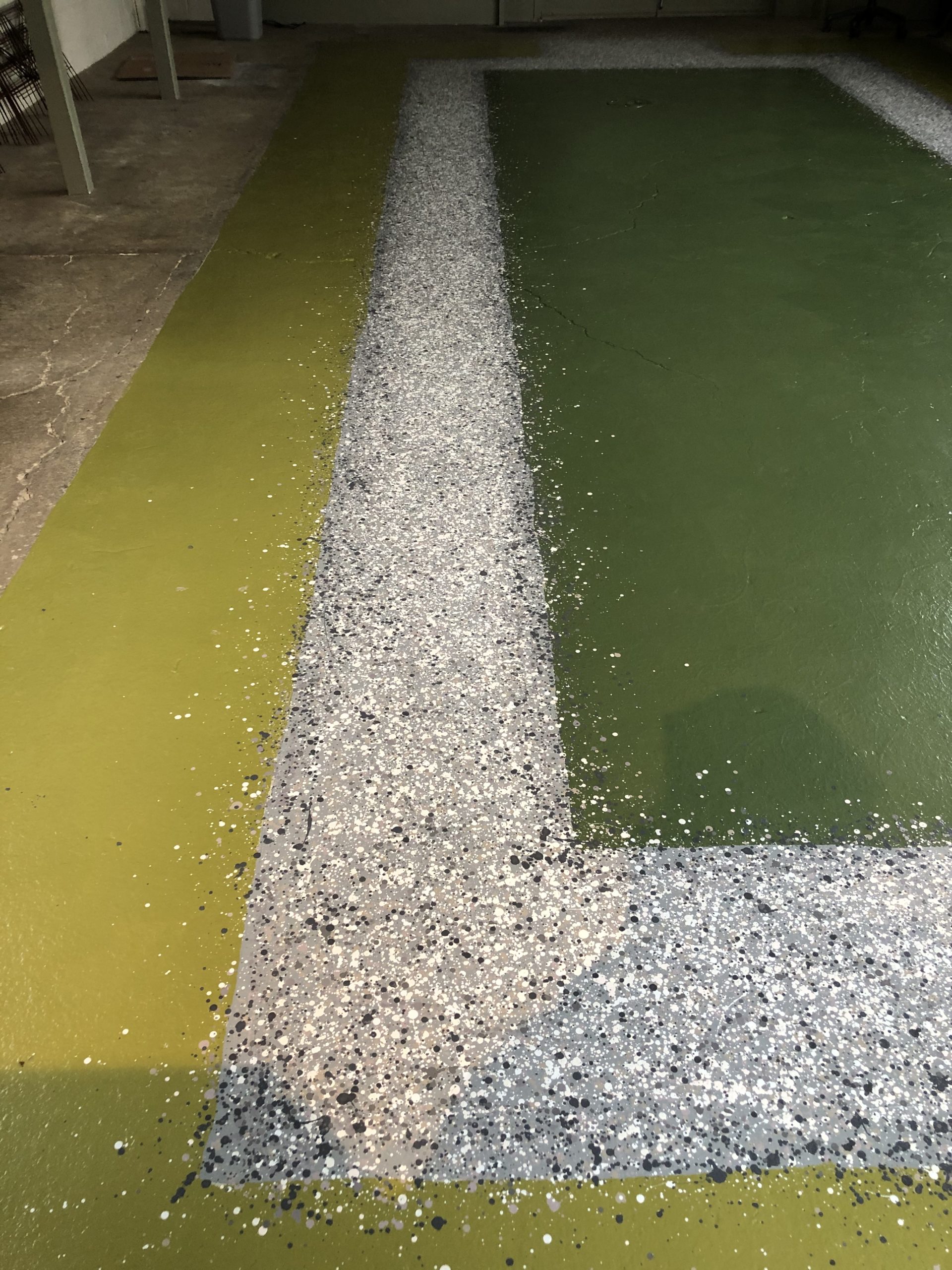 This would be the easiest part of the painting. A series of colors would be dripped on to the floor surface from a wood plant marker. The only finesse to this part would be slowly thinning the paint so it would drip at a reasonable rate-not too slow, and not too fast. Of course there was plenty of wrist and shoulder action, so the drips would be spaced out.
This would be the easiest part of the painting. A series of colors would be dripped on to the floor surface from a wood plant marker. The only finesse to this part would be slowly thinning the paint so it would drip at a reasonable rate-not too slow, and not too fast. Of course there was plenty of wrist and shoulder action, so the drips would be spaced out.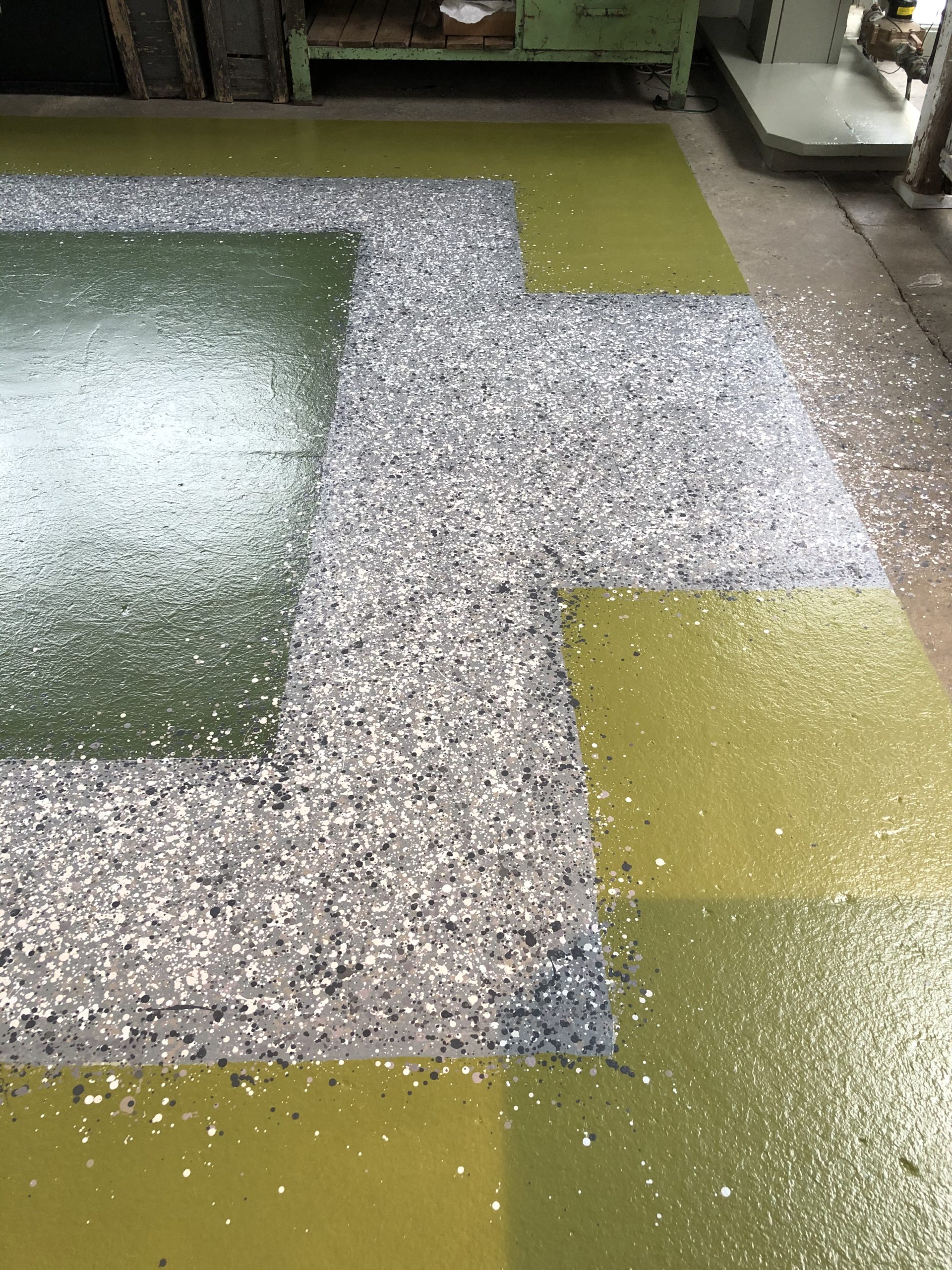
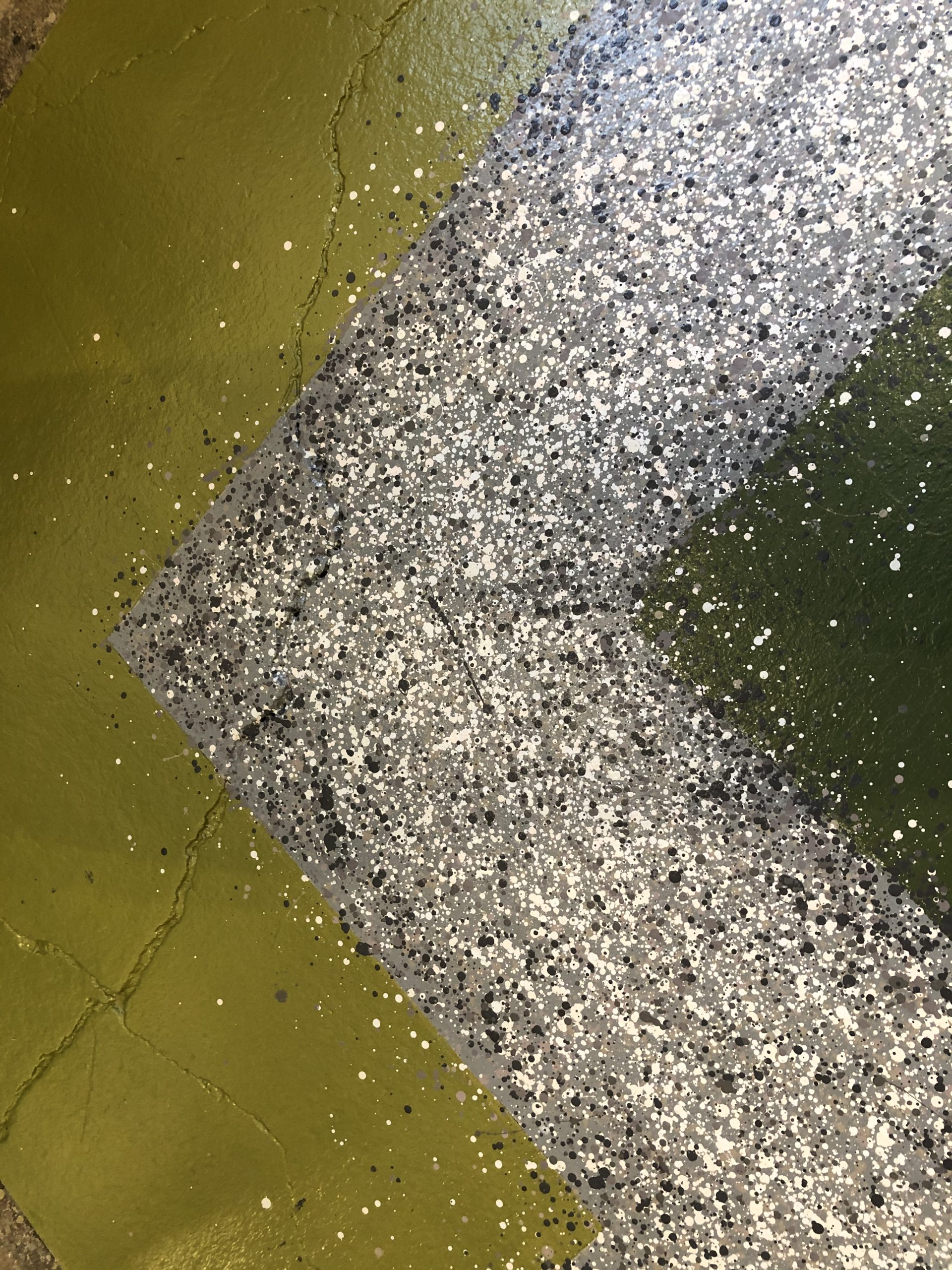 Some effort was made to keep the gravel darker and less detailed on the edges. Once the leaves to come were painted over the edges, that would help create a little sense of depth. This is decorative painting-not fine art. But a nod to composition and technique gives the mural a little more polished look.
Some effort was made to keep the gravel darker and less detailed on the edges. Once the leaves to come were painted over the edges, that would help create a little sense of depth. This is decorative painting-not fine art. But a nod to composition and technique gives the mural a little more polished look.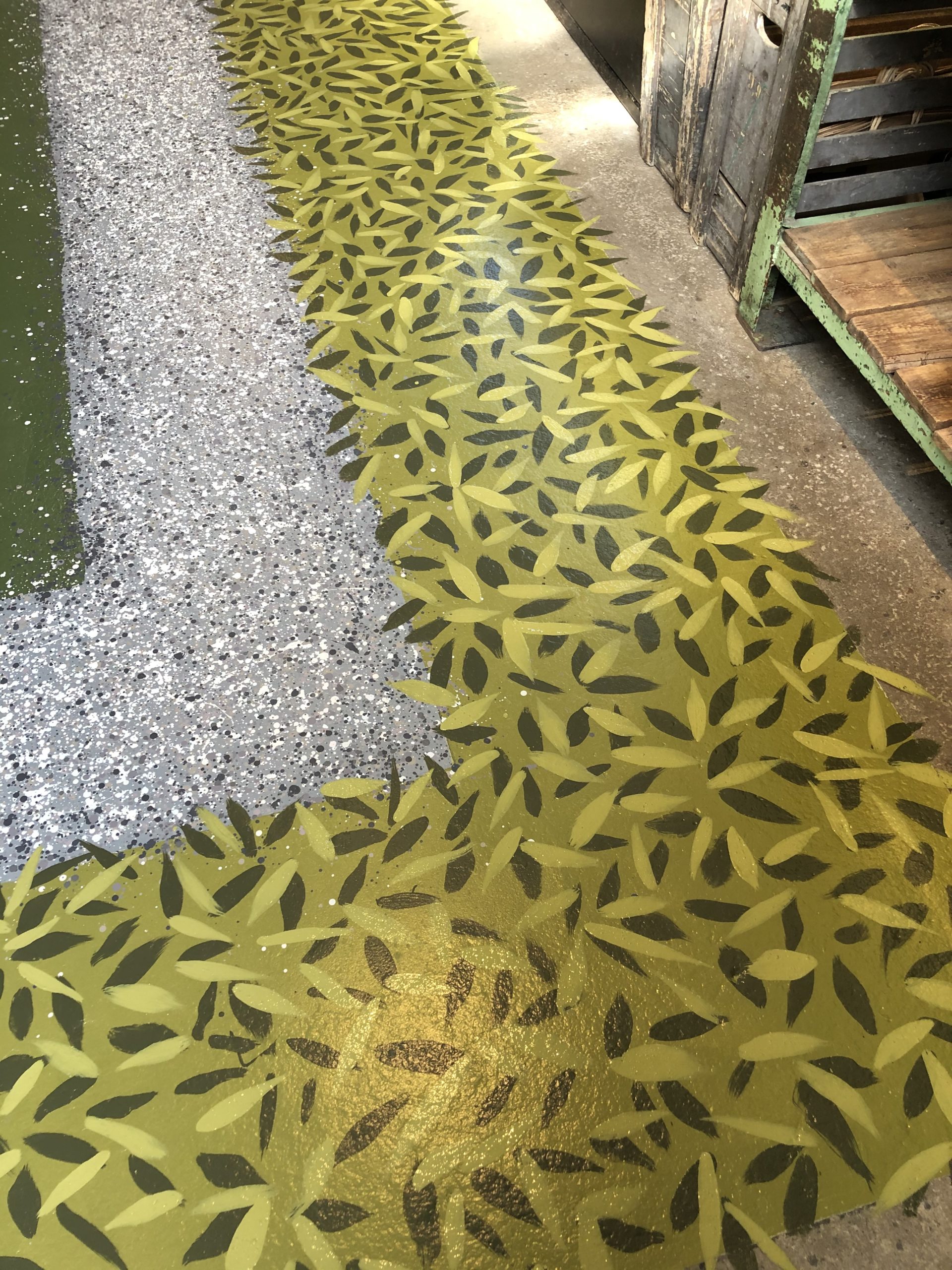
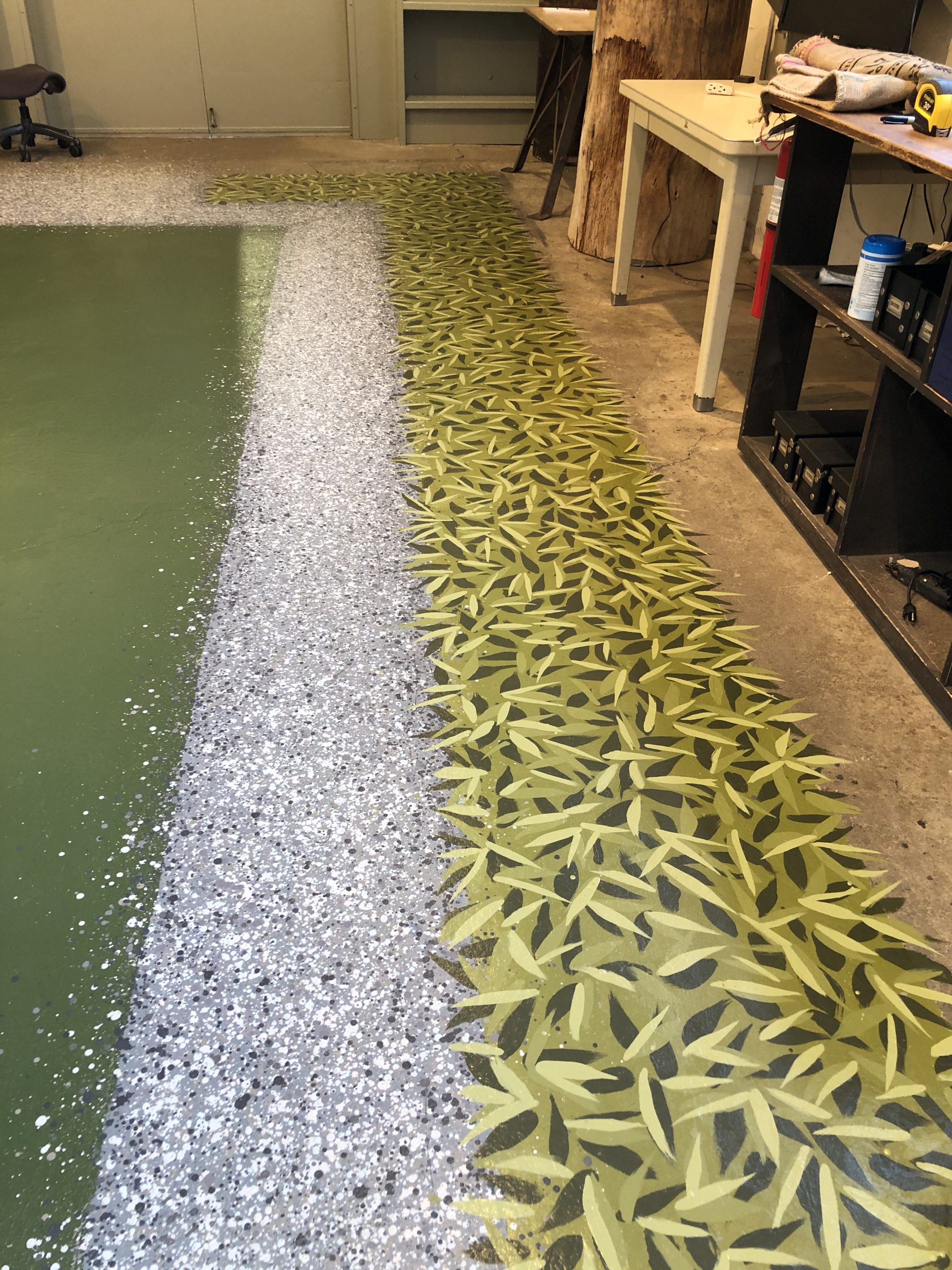
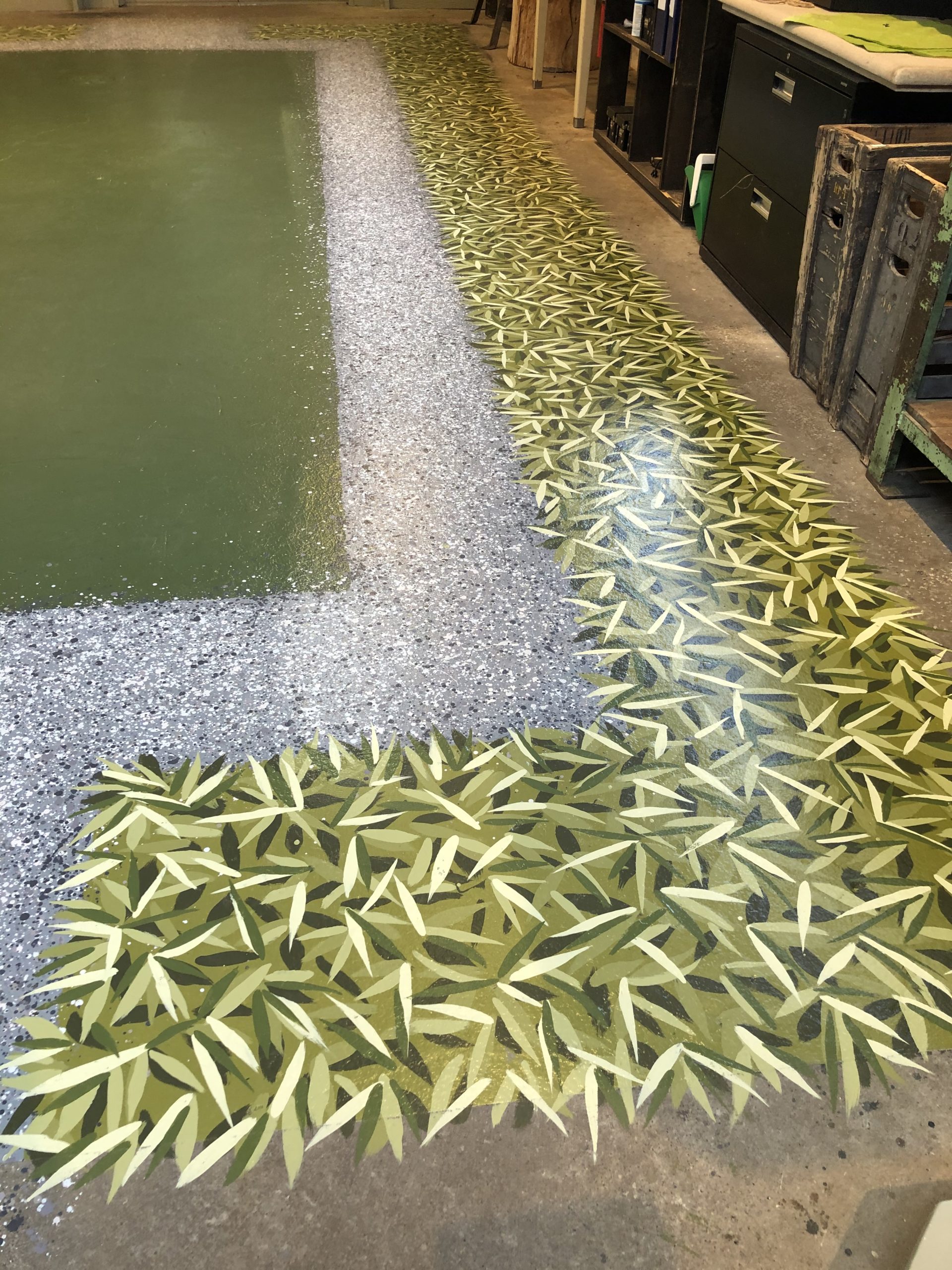
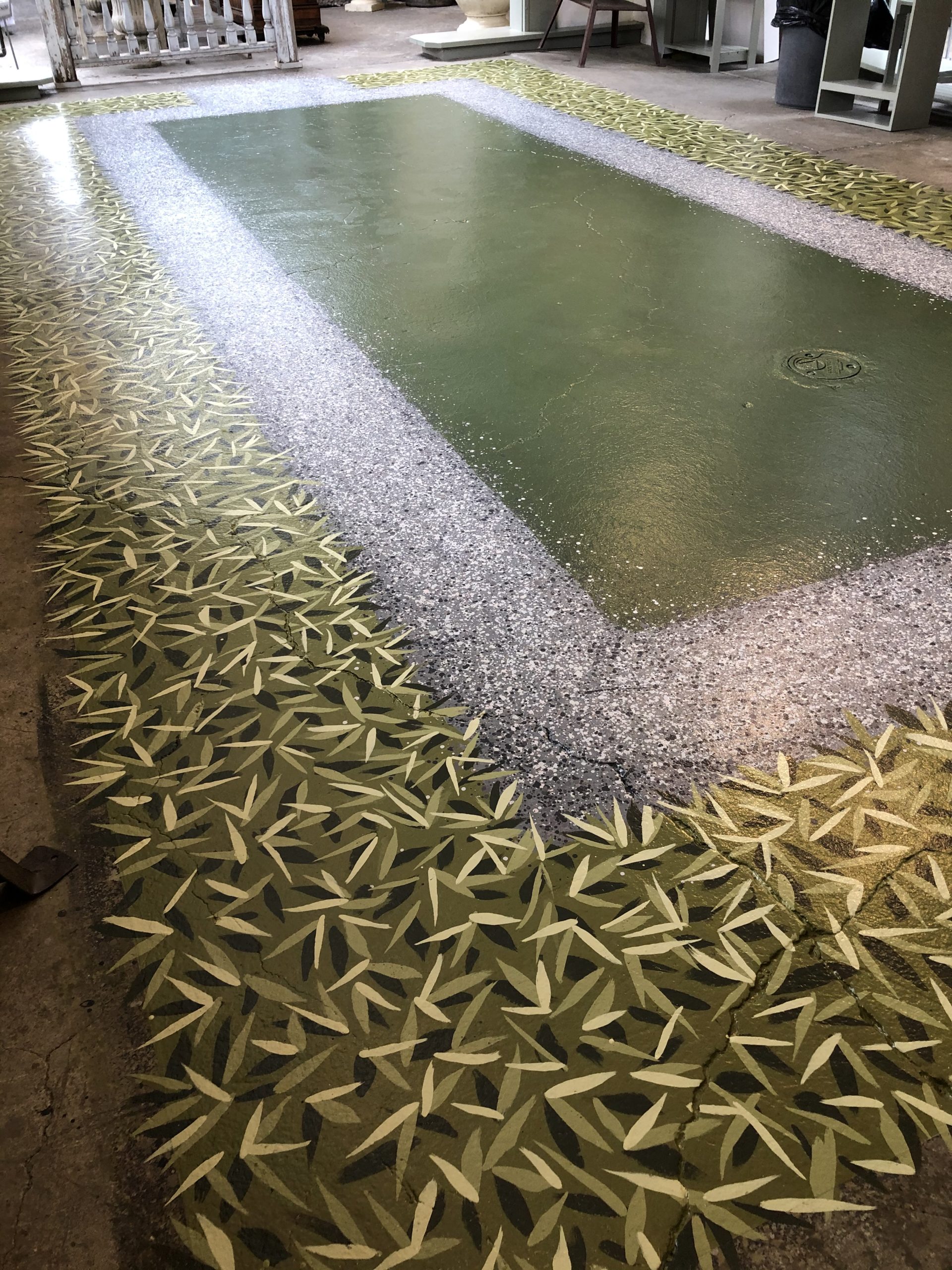
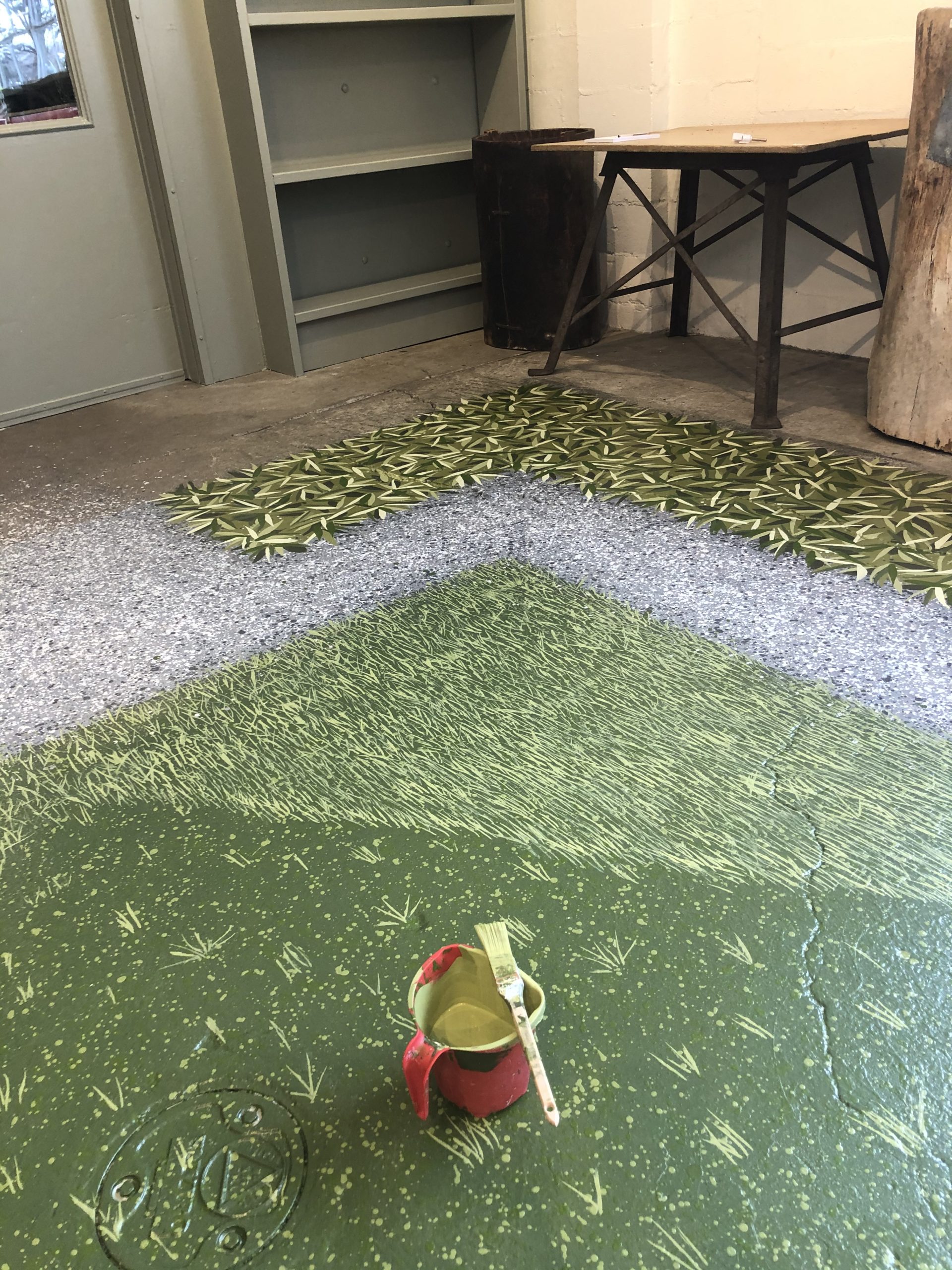
 Those marks were very lively. They brought the dark center up to the same visual plane as the gravel. Eventually I settled in to the job, and two days later that portion was finished.
Those marks were very lively. They brought the dark center up to the same visual plane as the gravel. Eventually I settled in to the job, and two days later that portion was finished.